Ever since I became hooked on palm trees, one genus instantly became my favorite. That genus was Dypsis and it is located almost exclusively in Madagascar. During my early periods of palm research I would read articles or online posts about about a single mountain in Madagascar that was loaded with amazing palms. Many of these palms were found nowhere else in the world other than this small mountain. When planning my four-week trip through Madagascar, I made this mountain a must.
Mount Vatovavy can be found in the Vatovavy-Fitovinany Region of the Fianarantsoa Province. The mountain itself is not far off the road from a small village called Kianjavato east of Ranomafana National Park. Lodging is not readily available around Mount Vatovavy, so I decided to make a day trip from Ranomafana with a few stops along the way. The road (RN25) from Ranomafana to Kianjavato is in really good shape by Madagascar standards, so the 80+ kilometers could be done in a few hours. Thursday morning was a busy market day, so the drive took longer than expected.
Along the road we would see a bunch of Dypsis mananjarensis. They were easily the most abundant large palms in this part of Madagascar and they were easy to spot because they stood out amongst the deforested landscape. My travel partner for the week, Jason, and I remarked that we found it odd a palm tree like Dypsis mananjarensis, which was so abundant and flowering everywhere in this part of the world, was still so rare in cultivation.
Like most of Madagascar, much of the rain forest has been burnt to the ground. So it is with great fortune that Mount Vatovavy is actually a sacred mountain to the local people. As I will show you later in some pictures, this little mountain really is a Noah’s Arc floating in a sea of deforestation. There is no doubt that this mountain would have been burnt bare as well, had it not been protected by the local people. The starting point for the hike up Mount Vatovavy takes place at a research center and nursery that is managed by the Madagascar Biodiversity Partnership. If you plan on climbing up Mount Vatovavy, you must coordinate well in advance with one of the agencies that supports it. You can’t just show up and hike. I worked with a contact from the Omaha Henry Doorly Zoo and Aquarium, so the day Jason and I arrived two guides were ready to take us up the mountain.
When I first set my eyes on Mount Vatovavy it didn’t appear to be too daunting. It wasn’t a large mountain and it certainly wasn’t tall.
The hike itself would actually prove to be a challenging 5.5-mile round trip, as there were some very steep parts and it was extremely hot and humid that day. According to my Strava log, Mount Vatovavy tops out at 1,750 feet above sea level.
Doesn’t it look like a gorilla?
Not far into the hike we ran into a regularly played out scene through Madagascar: burnt land in protected areas. I saw fires after fires in National Parks, so it didn’t surprise me to see burnt vegetation here. The only good news here is that this was accidental. A fire set by locals for making charcoal took off on them. Still, every little bit of primary rainforest that is burnt will not be coming back.
As we made our way into the first parts of the remaining primary rainforest, we got one more view of the steepness waiting for us. To get to the top we would walk around the back of the mountain. However, on the descent we dropped right from the front. You can see that in the Strava elevation image I posted above. The mountain itself is beautiful with the dark green vegetation mixed in with the colorful granite outcrops.
The first large palm we would see didn’t even belong to the genus Dypsis. This colorful, dark brown trunk belonged to what I believe to be a Ravenea madagascariensis.
Dypsis mananjarensis was a very abundant palm on Mount Vatovavy. It is unique in that it has that scaling on the petioles that resembles mealybugs.
Dypsis mananjarensis has an attractive crownshaft too.
Dypsis prestoniana is also found on Mount Vatovavy. This habitat is about as far north as you will find Dypsis prestoniana growing in Madagascar.
Dypsis prestoniana is a large and very attractive palm when it reaches adult size. These large palms were difficult to photograph in the jungle.
One plant that I was excited to see in habitat was an unnamed palm that has been given the moniker Dypsis ‘Vatovavy Blue.’ This name was given to it by two Madagascar palm enthusiasts that brought this palm into cultivation. The name came from the shiny blue metallic coloration this plant’s leaflets can have as juveniles. While this palm shares some characteristics of a few other Malagasy palms, after seeing Dypsis ‘Vatovavy Blue’ in habitat, I believe this will be some newly described species some day. Dypsis ‘Vatovavy Blue’ and Dypsis prestoniana were found growing in the same areas around the base of Mount Vatovavy.
It isn’t as large of a palm as Dypsis prestoniana or even Dypsis mananjarensis, but Dypsis ‘Vatovavy Blue’ is certainly a palm worthy of cultivation.
I was lucky to see many adult Dypsis ‘Vatovavy Blue’ trees growing on Mount Vatovavy. You can see from the pictures below that it is a charming palm. One characteristic of many adults is a glossy-looking trunk. The trunks looked wet even though it hadn’t rained.
Dypsis fibrosa is a very abundant palm throughout much of the east coast of Madagascar. It was well represented on Mount Vatovavy as well. This one was opening a nice new red leaf.
This Asplenium nidus found a spot to luxuriate on.
What is so painful to me with all the habitat destruction I witnessed in Madagascar is that old rainforest trees, the roots of one of which you can see below, will take hundreds of years to get this size. So it is almost impossible right now to recreate what Mother Nature spent millions of years doing. I would see it time and time again, old rainforest replaced with invasive secondary vegetation.
The trail to the top of Mount Vatovavy would run along rock walls like this in a few spots. My friend Jason gives scale to appreciate how tall these vertical granite cliffs were.
We would see a lot of these trunks climbing Mount Vatovavy. Often mistaken for palm trees, these are actually the trunks of some very old Traveller’s Trees (Ravenala madagascariensis). I never imagined they could grow this tall.
Ravenea sp. ‘Giant’ is another unnamed palm that was brought into cultivation around 10 years ago. I was looking forward to seeing it as well, thanks to field reports that it was a beautiful, massive Ravenea – which the pictures below prove it to be. It might end up being either Ravenea robustior or Ravenea krociana, but for now it can be found in cultivation as Ravenea sp. ‘Giant.’
Named for the almost trapezoid outlined leaflets, Dypsis trapezoidea can only be found on Mount Vatovavy. Dypsis trapezoidea is also one of the only Dypsis to show premorse tips (meaning they look bitten off). To me it is one of the more attractive small Dypsis.
Best guess here is Dypsis angusta.
Dypsis eriostachys is another rare Dypsis that can be found growing only on Mount Vatovay and one other location in the south of Madagascar. You can see why some people call these small understory Dypsis the Chamaedoreas of Madagascar.
Juvenile Dypsis eriostachys.
Best guess is also Dypsis eriostachys on this palm.
Ravenea sambiranensis is one of the more attractive Ravenea. The ones on Mount Vatovavy had an interesting stepped trunk from the old leaf bases. However, rumor has it there might be a new species of Ravenea on Mount Vatovavy. Could one of these be it?
Which way? “Up” of course. There were some very steep and slippery parts of the trail where you had to crawl on all fours to get up it.
If you look at the Strava elevation picture I posted earlier, you will see that at about 2.5 miles into the hike you hit a somewhat flatter part of the trail. It was here that much of the really unique palms could be found on Mount Vatovavy. As an example, along the trail we would see a few of these juvenile palms shown below. We didn’t know what they were at the time.
About 5 minutes later I found a large leaf base that had fallen off a palm. I looked up the trunk and saw one of the coolest palms that I would see during my month-long adventure in Madagascar. The rare and ridiculously slow-growing Masoala kona.
The leaf bases of Masoala kona really were this yellow. Knowing how slow these grow under perfect cultivation in Hawaii, I would estimate this palm to be over 100 years old. It would be the only adult I would see, but my guides said they know of two more like this on another part of the mountain.
The next palm we came upon is another one that could only be found growing on Mount Vatovavy and nowhere else in Madagascar. Dypsis sahanofensis.
Large ones were very hard to photograph due to the canopy of the jungle where they were located. This is the best I could do. You can see it is a skinny-trunked palm.
The palm tree that I was most excited to see climbing Mount Vatovavy was Dypsis basilonga. Dypsis basilonga is another of those palms growing on Mount Vatovavy that can be found nowhere else in Madagascar. I was a tired, sweaty, but extremely happy hiker to get my picture next to one of my favorite palms to grow in my own yard.
Dypsis basilonga gets its name from the long basil leaflets it has, which can be seen in the photo below.
This one has a weird root thing going on.
Continuing up, we crossed a makeshift bridge that spans a deep ravine. Almost to the top!
Once at the top the views were amazing. But also extremely depressing. Whether you looked towards the east or west like shown below, the landscape showed massive deforestation as far as the eye could see. Mount Vatovavy truly is a Noah’s Arc for this area. If this one little mountain could hold so many secrets, imagine how many were removed from the face of the earth having never been officially discovered due to the slash and burn agriculture practices of Madagascar.
This concrete cross at the top was poured way back in 1952.
Two plants stood out at the top. One was this unknown Dracaena species which is possibly a form of Dracaena reflexa. It had very thick, rubbery leaves.
The other was Dypsis basilonga—these two were the highest palms on Mount Vatovavy. They were found growing not far from the summit and the concrete cross.
We would spend about an hour up top enjoying the scenery and eating a packed lunch we brought. After lunch we headed back down the mountain. We would take a more direct route back to the car which proved to be very steep. It also gave us an opportunity to see a few different things. Like this unknown Hypoestes or this unknown flowering tree.
Bad picture, but we also saw our only lemurs on Mount Vatovavy. This is a Black-and-white Ruffed Lemur kicking back.
More Dypsis mananjarensis.
This young Dypsis mananjarensis had a new red leaf opening.
Giant Red Millipede on the trunk of a Dypsis mananjarensis.
Sticking to the creepy stuff, this Golden Silk Orb-weaver (Nephila) was huge. As large as my hand, in fact.
You could also find Dypsis ifanadianae on Mount Vatovavy, which I didn’t know going into the hike.
Dypsis ifanadianae always has a contrasting, dark-colored lower part of its crownshaft and more relaxed leaflets to separate it from the very similar Dypsis ‘Vatovavy Blue.’
Almost back to the edge of the remaining rainforest I spotted this unknown juvenile Dypsis with wide leaflets.
That concluded the highlights of the Mount Vatovavy trek. I highly recommended it for any palm lover visiting Madagascar.
Once back to the car we planned on one more stop. That was to visit the famed Dypsis ifanadianae that grows along the road back to Ranomafana, not far from the town of Ifanadiana where it gets its name from. This plant has been photographed and posted online by many visitors hunting palm trees. Notice the lower, dark part of the crownshaft like those on Mount Vatovavy?
Close to the town of Ifanadiana along the road there were a few small patches of remaining rainforest. Thinking we were done for the day, looking out from the window of the car I noticed some differently shaped palm fronds poking out of the canopy. I asked the driver to pull over and I headed up the hill to see what it was. Luckily there was some semblance of a trail or path up the hill which I could follow to help reach the palms. Once I got up there I saw these. What the heck were they?
Exploring around the area, I found my answer not far away. A totally different form of Marojejya insignis than I saw around Andasibe. This form, now referred to as the “Southern Form” of Marojejya insignis, has smooth green petioles and they don’t have any of the fused leaflets you see in the Northern Form. While the two locales look different, botanists have confirmed by flower that they are the same species.
There were many younger plants growing here as well. What a treat to find this by chance.
But wait! That’s not it. The land of so many surprises was about to give another. Heading back down I noticed some interesting juvenile palms off to the side. They all had one thing in common: fused leaflets.
Now the interesting thing about this was that I didn’t know of any other Dypsis (and still don’t) that had this characteristic. Another unique thing about these juvenile palms was the petiole striping.
I figured if there were juveniles around, there must have been an adult somewhere too. I hunted around for a while where I could and ended up finding one in an area I had already passed climbing up to the Marojejya insignis. It wasn’t a large palm, but was certainly attractive. This unknown palm held its leaflets erect on the petiole, unlike the relaxed leaflets of Dypsis ifanadianae. It also had a dark green trunk with white crownshaft.
Believe it or not, after this last excursion I was tired and palmed out. It was time to get back to the hotel in Ranomafana and get some dinner and rest, because the following day had in store further treks into the jungle in search of more that Madagascar had to offer.

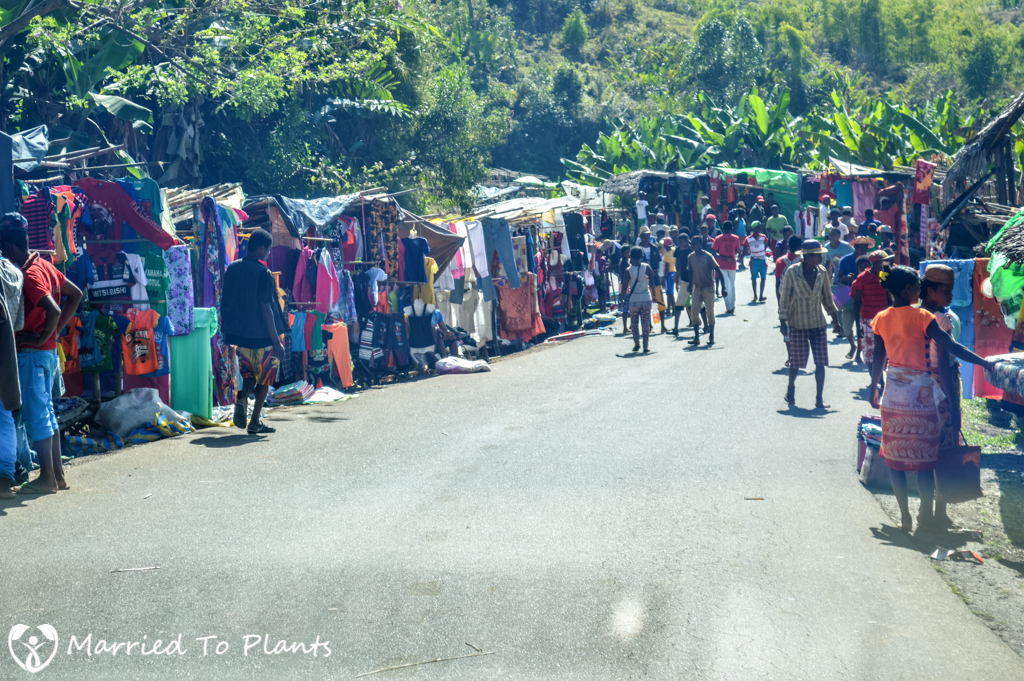

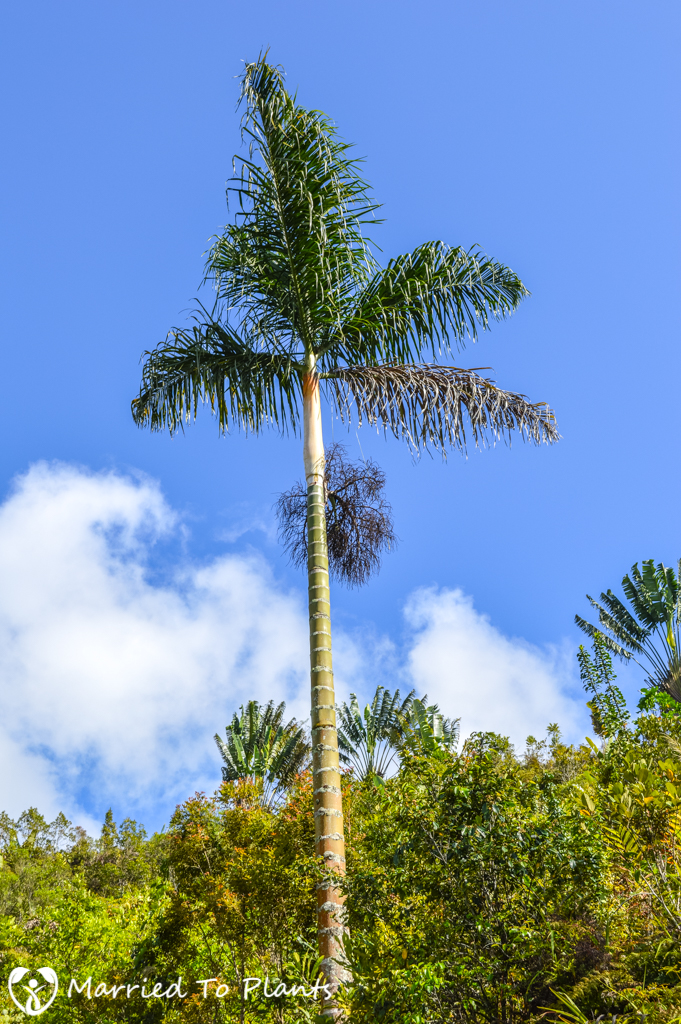
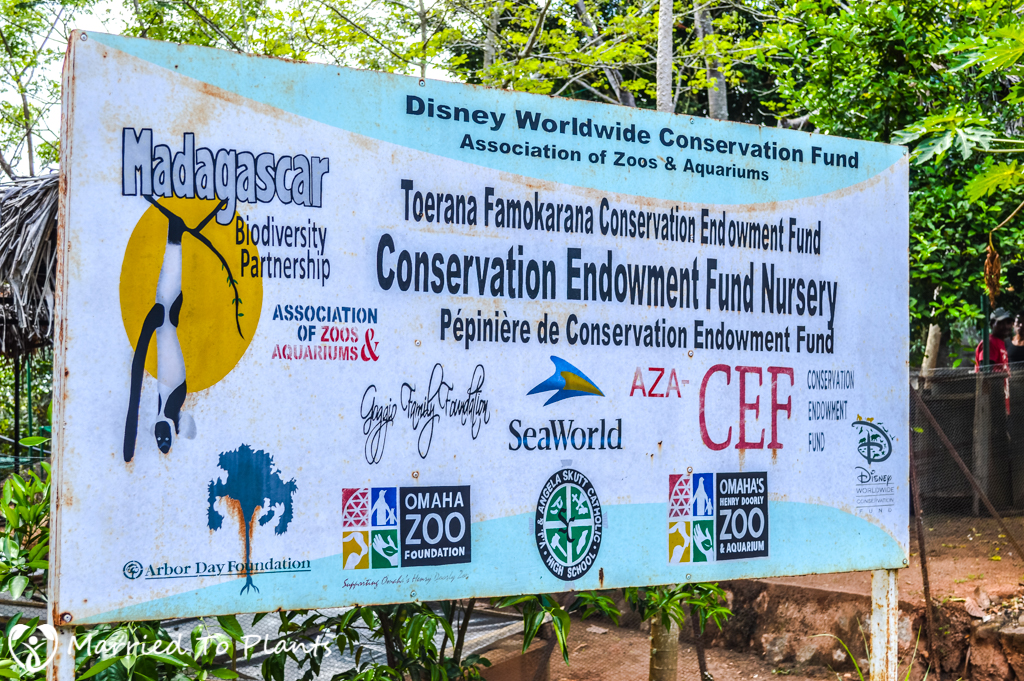
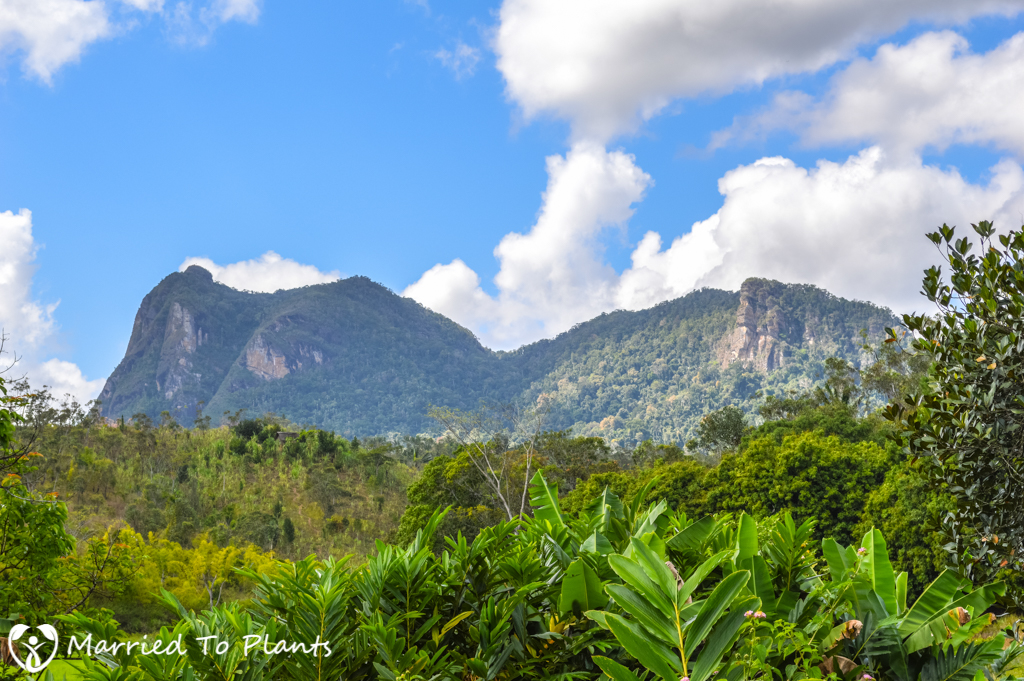
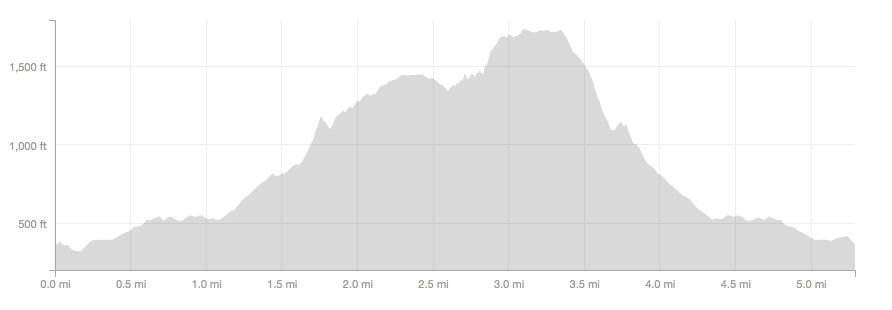
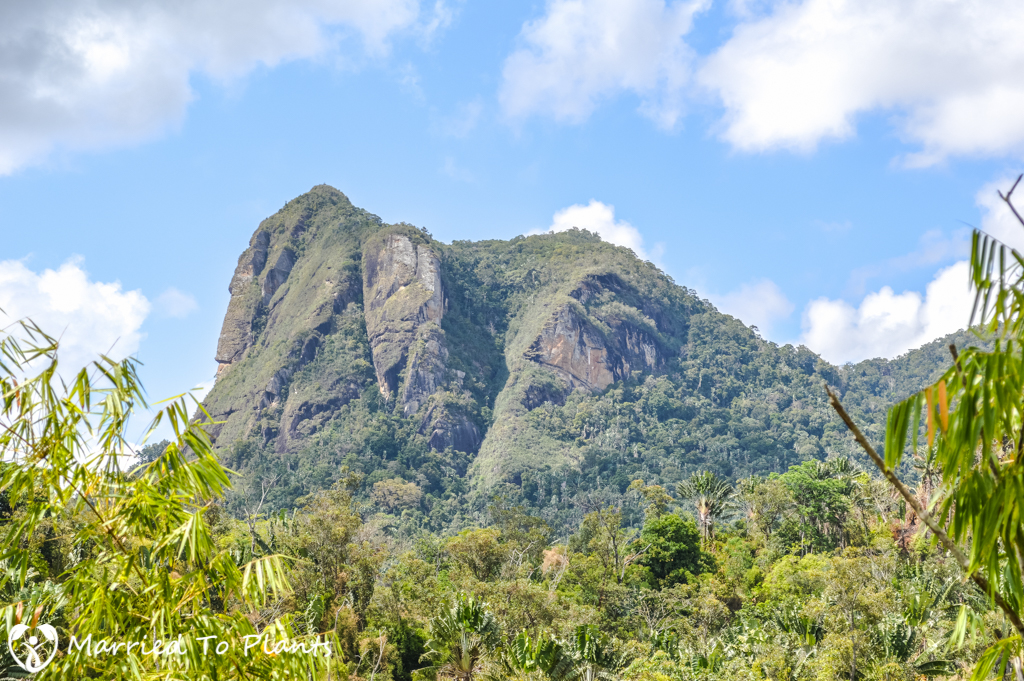
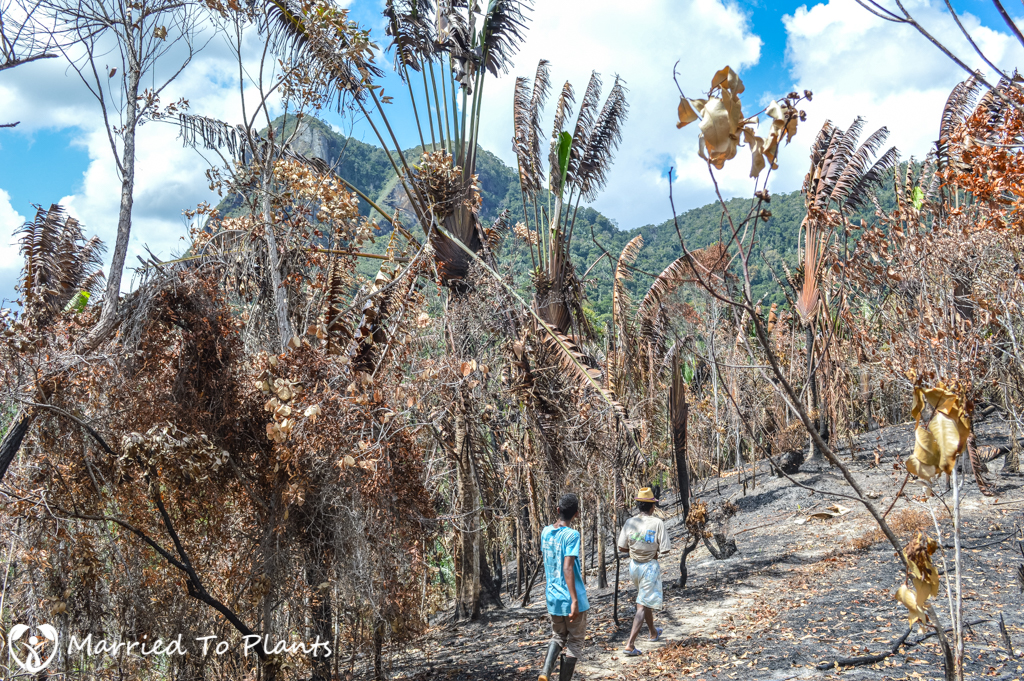
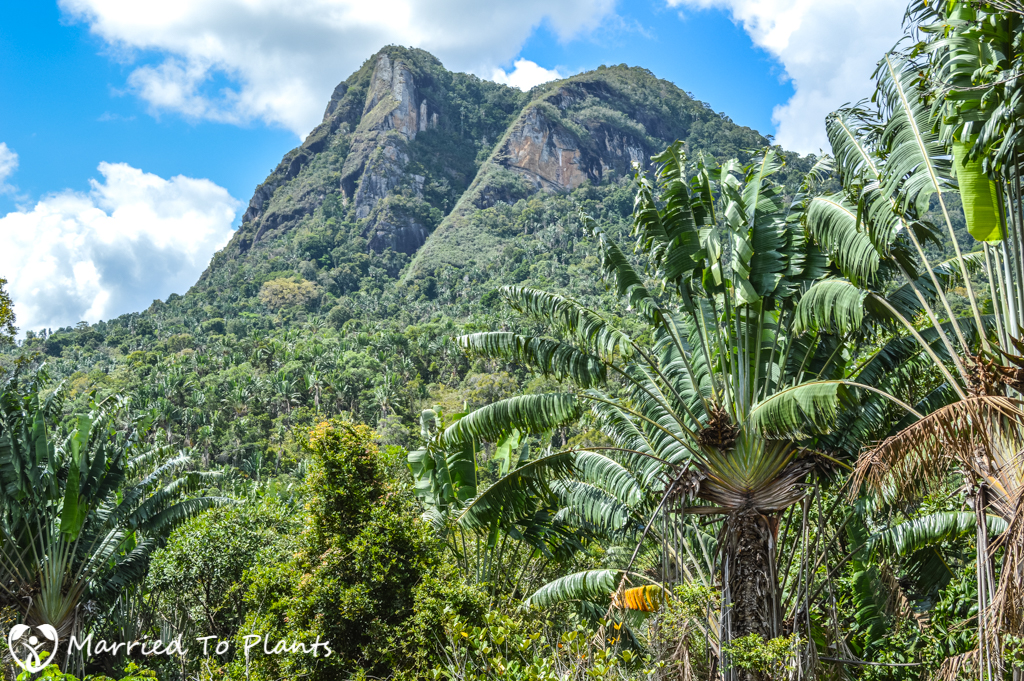
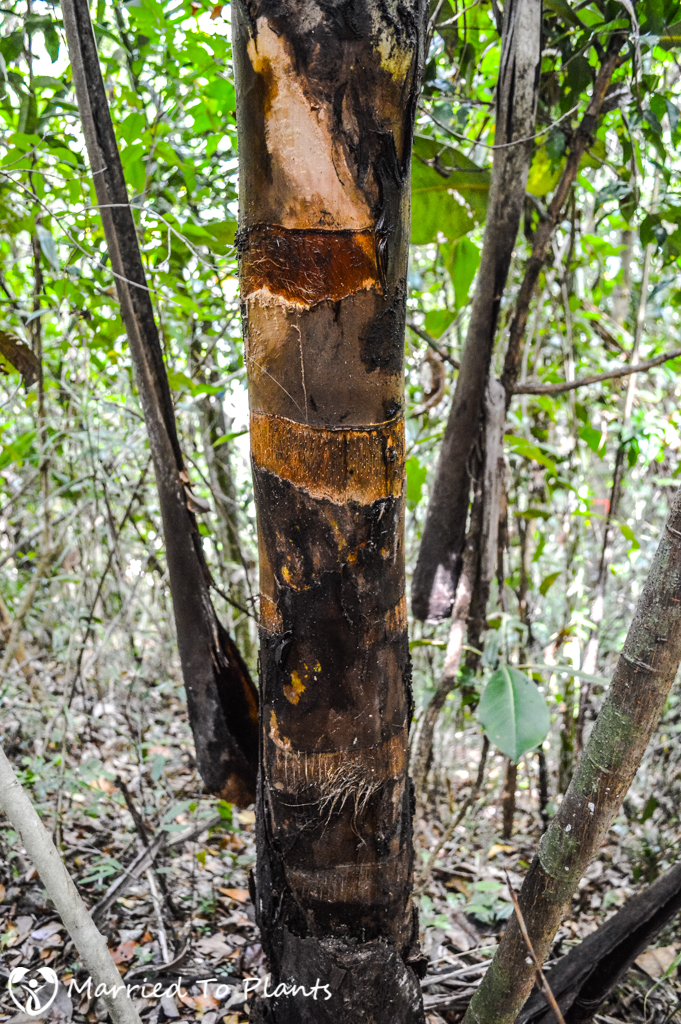
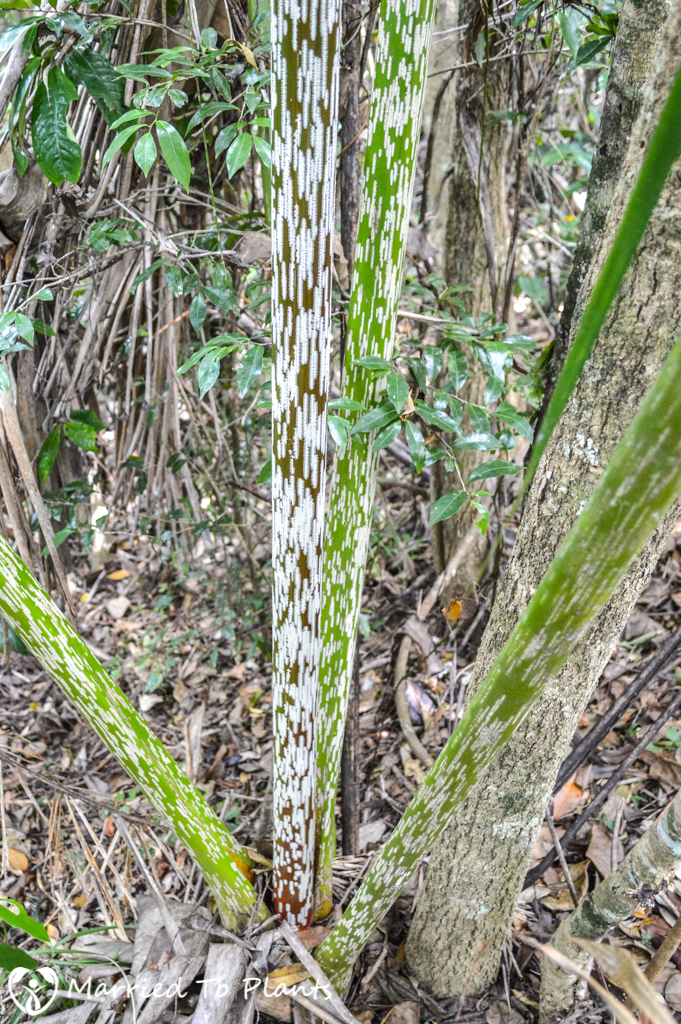
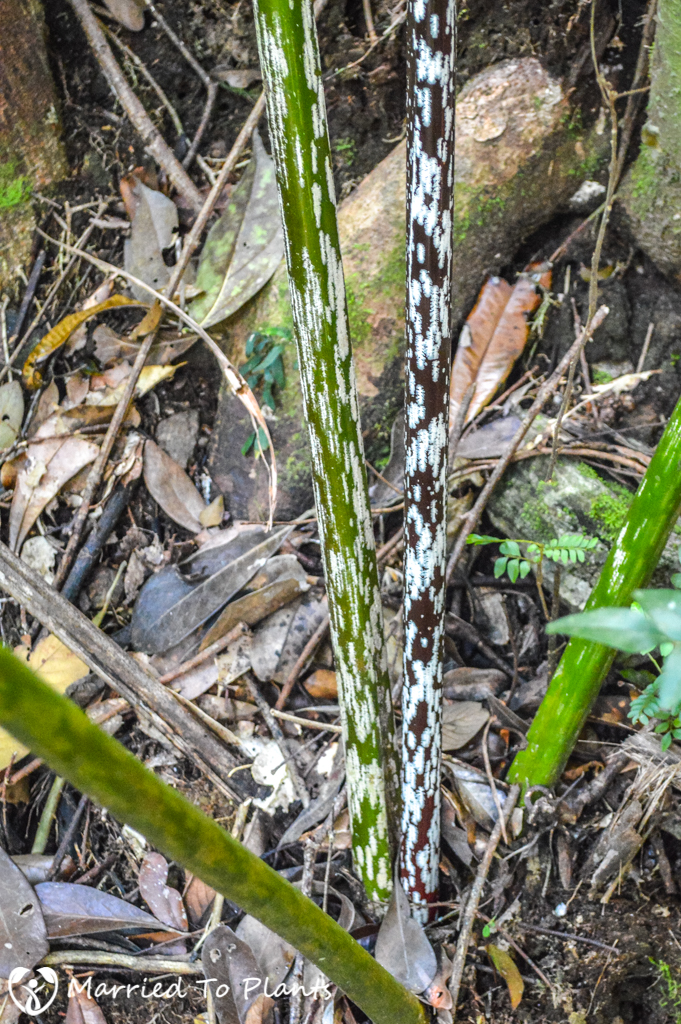
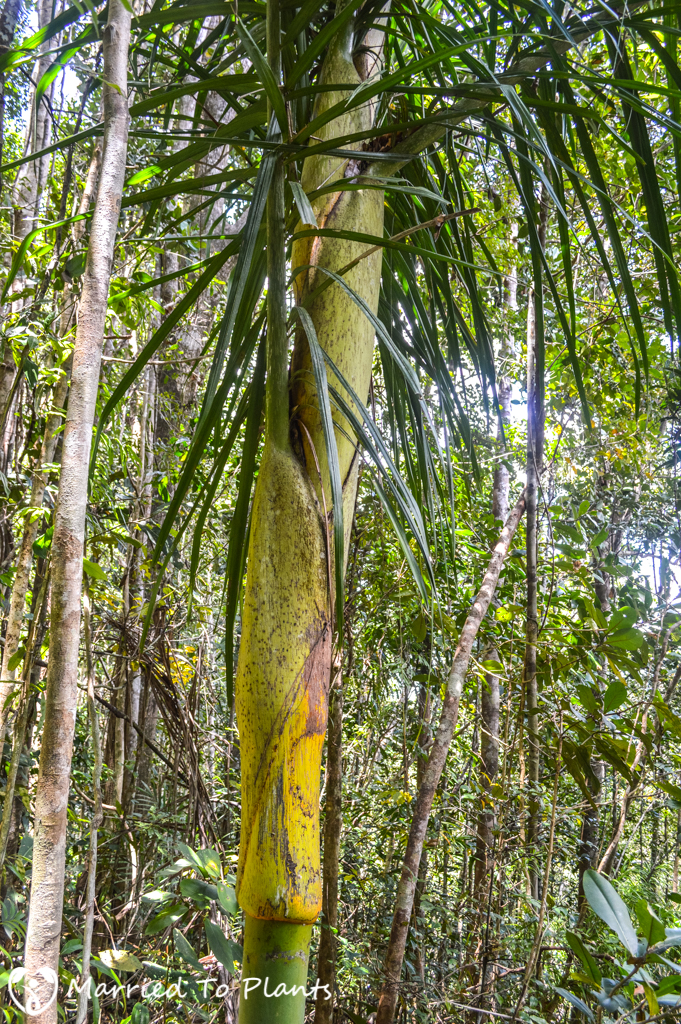

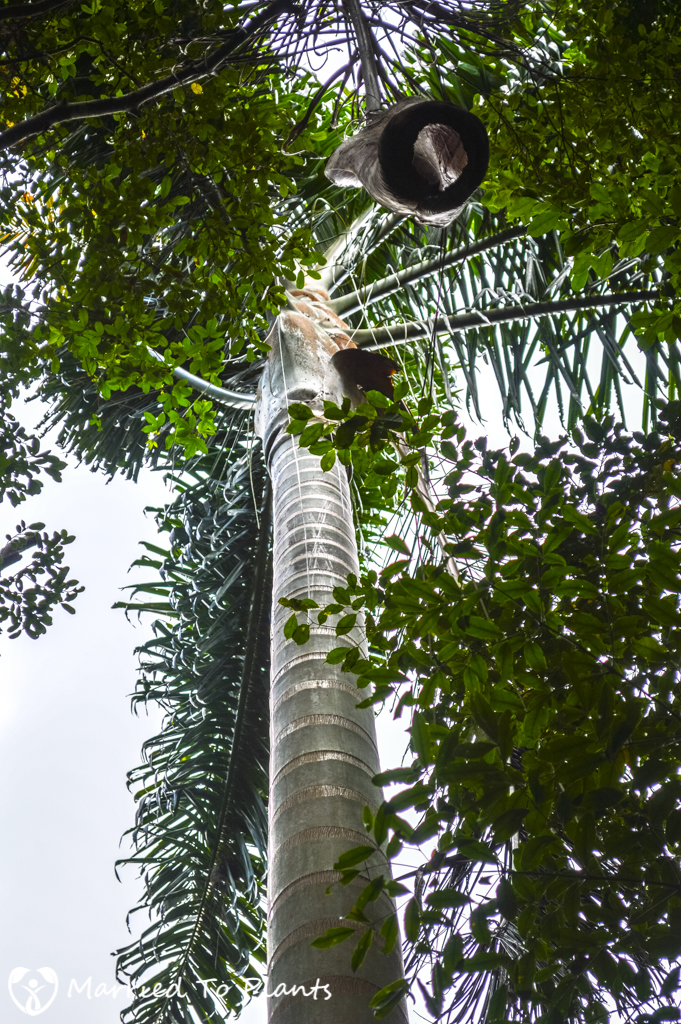
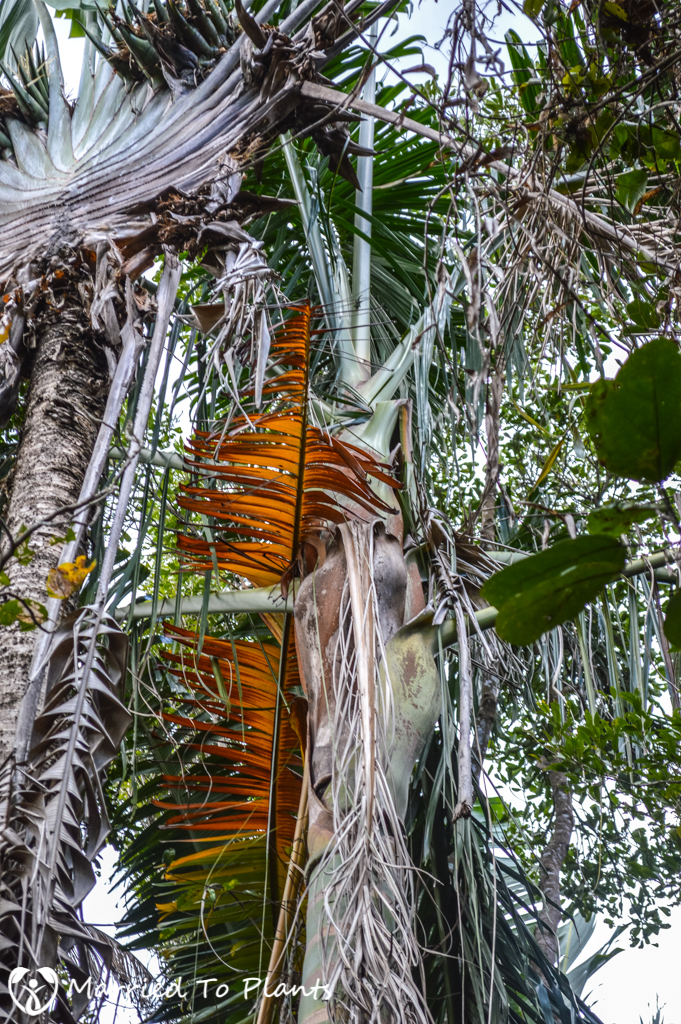
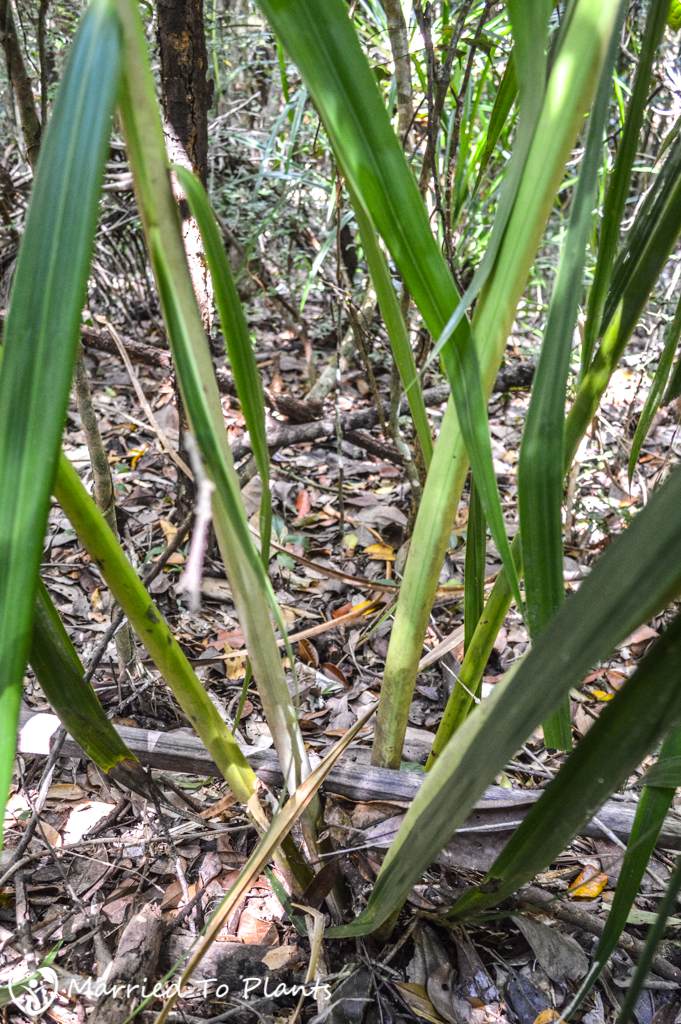
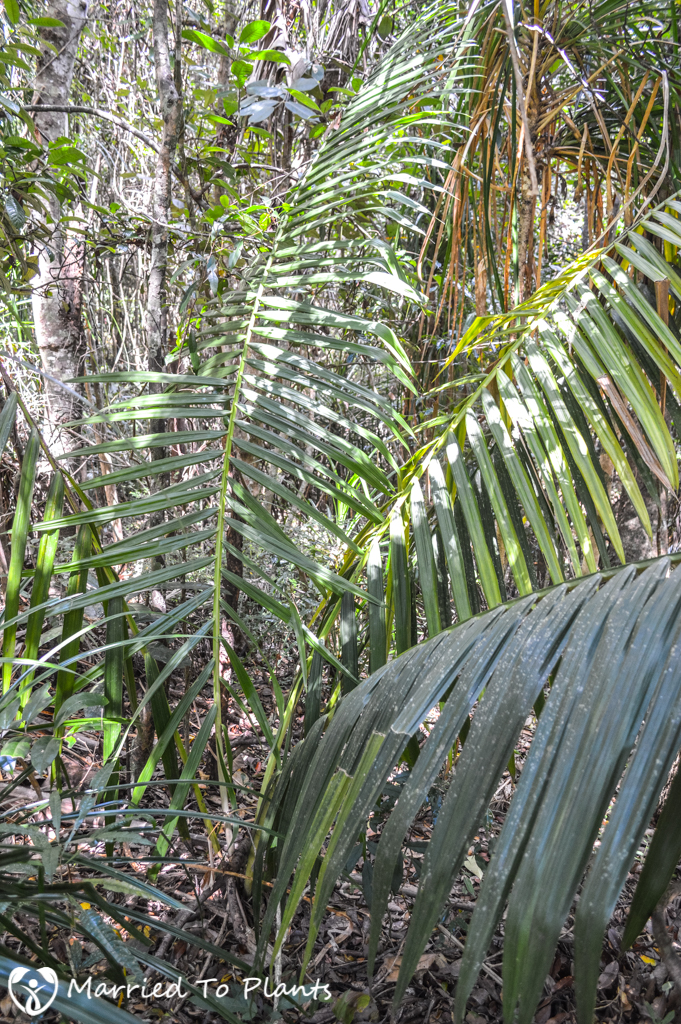
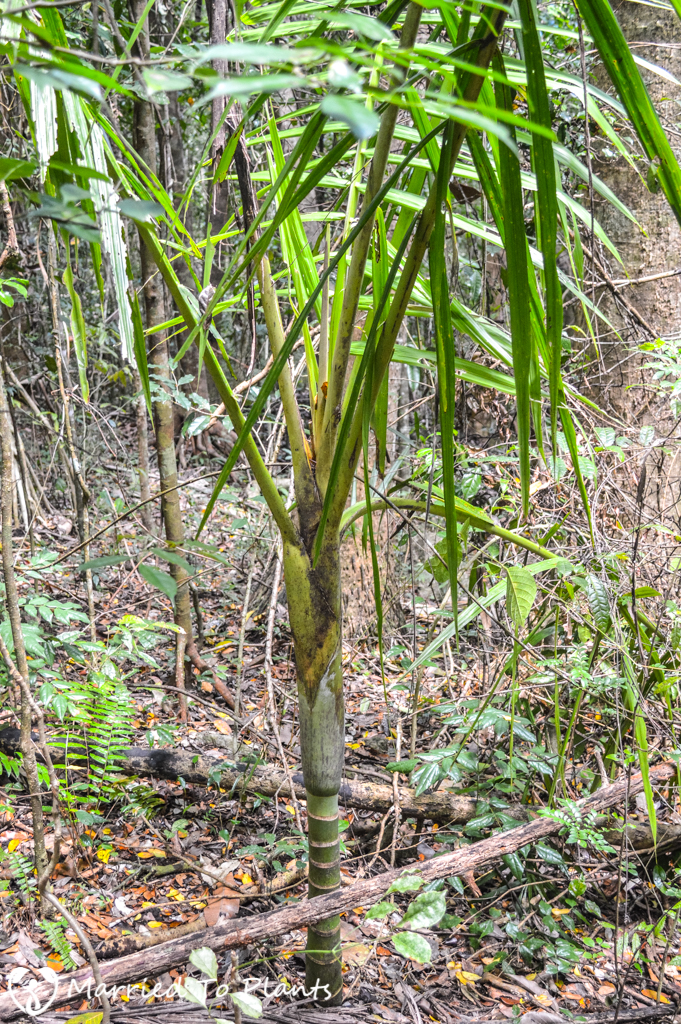
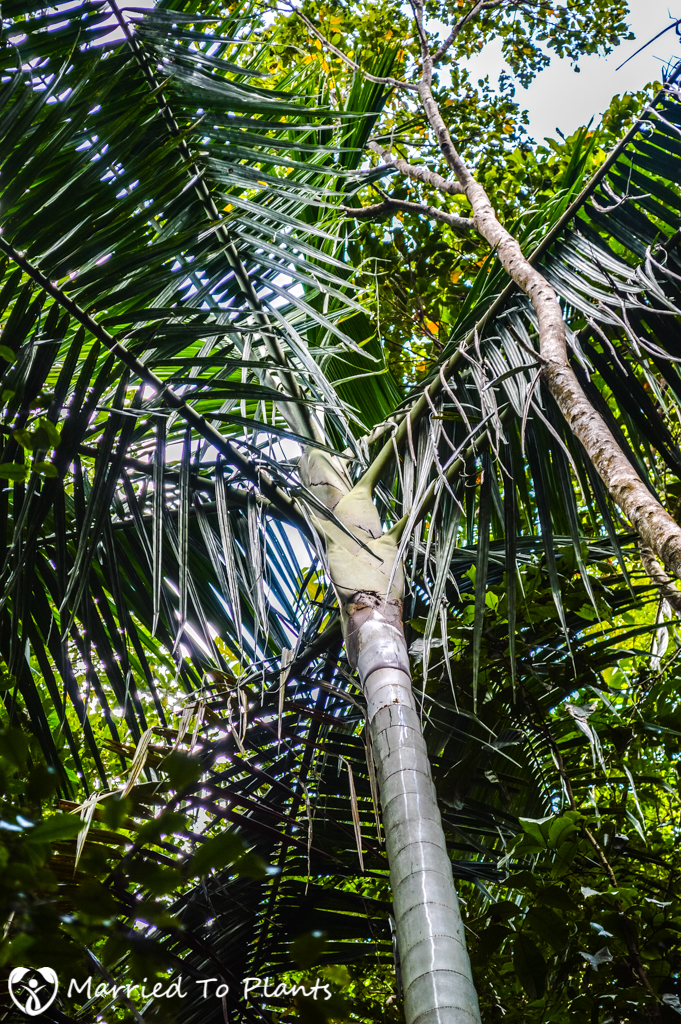
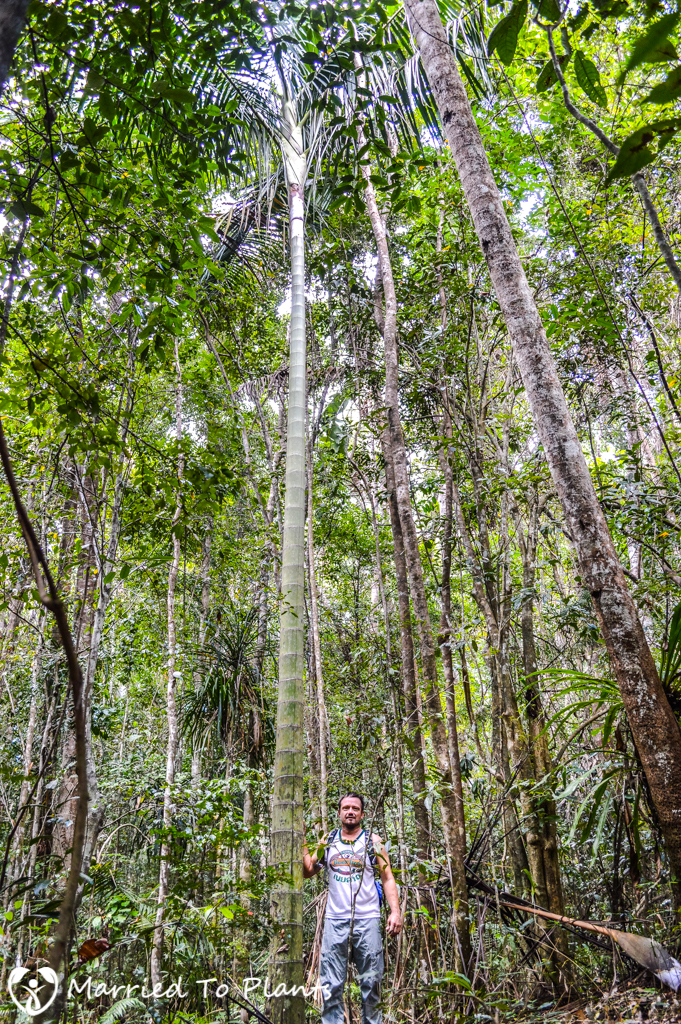
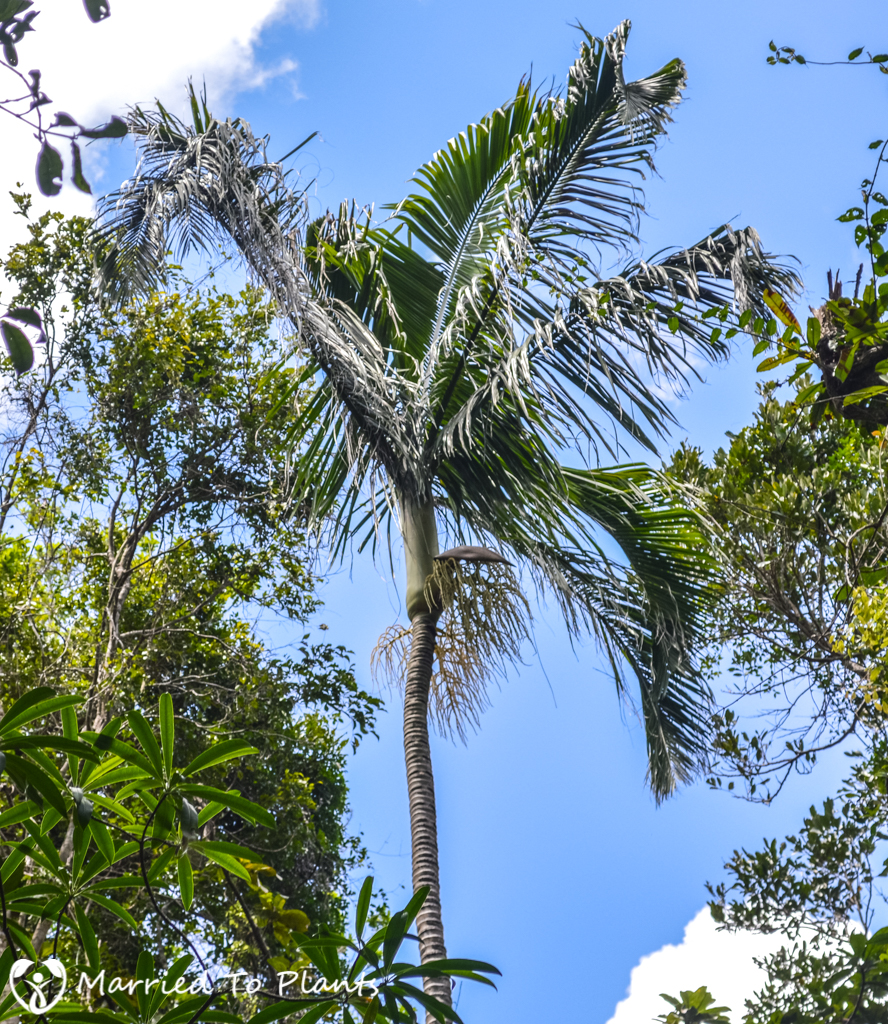
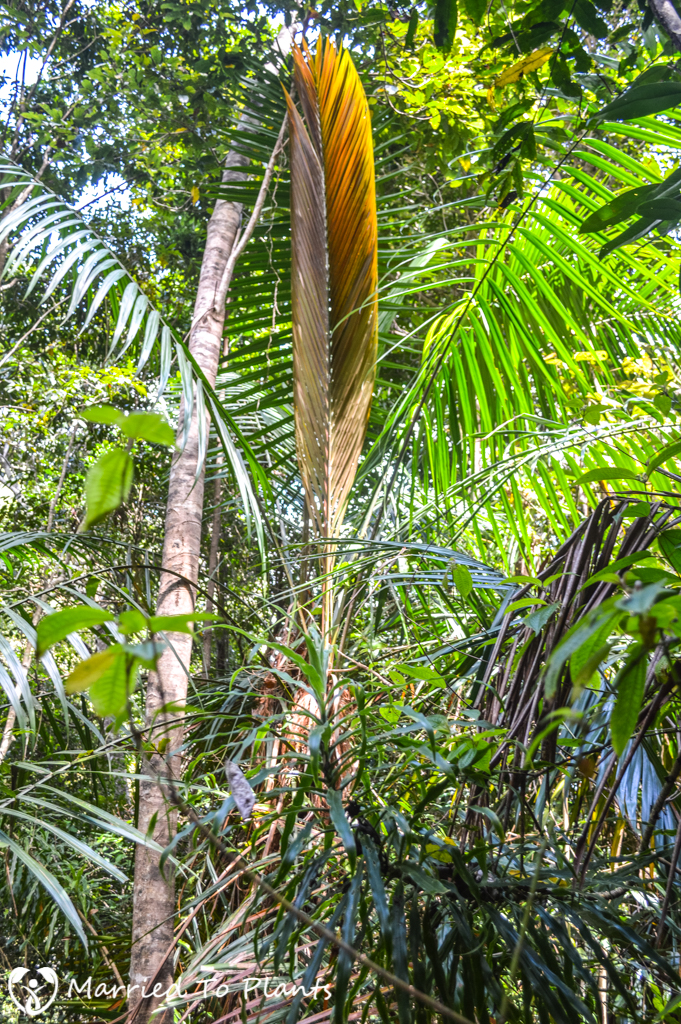

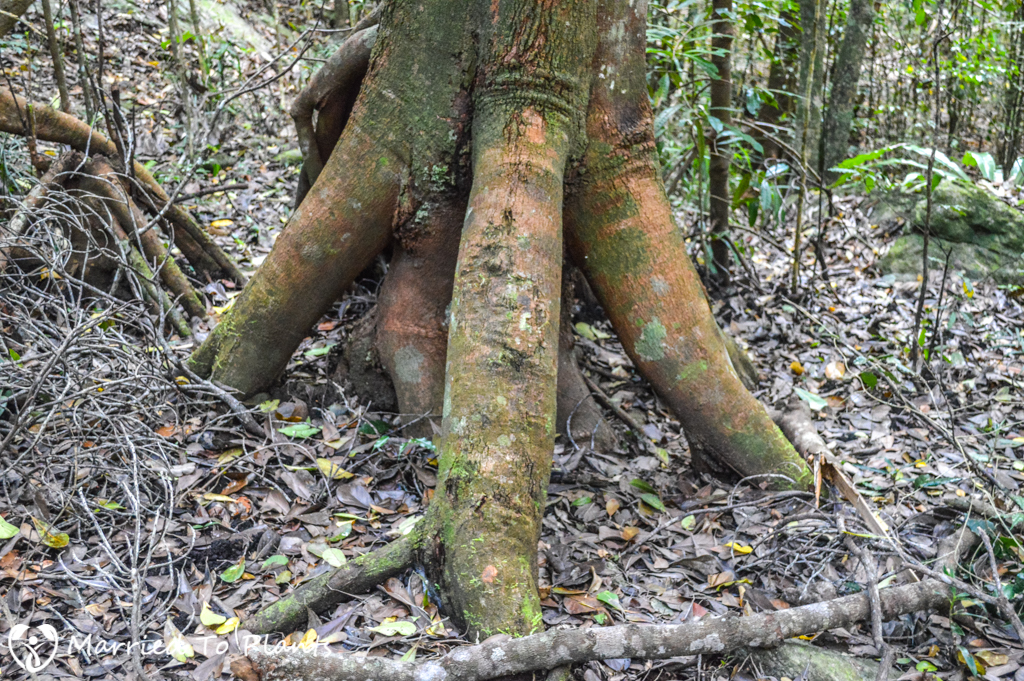
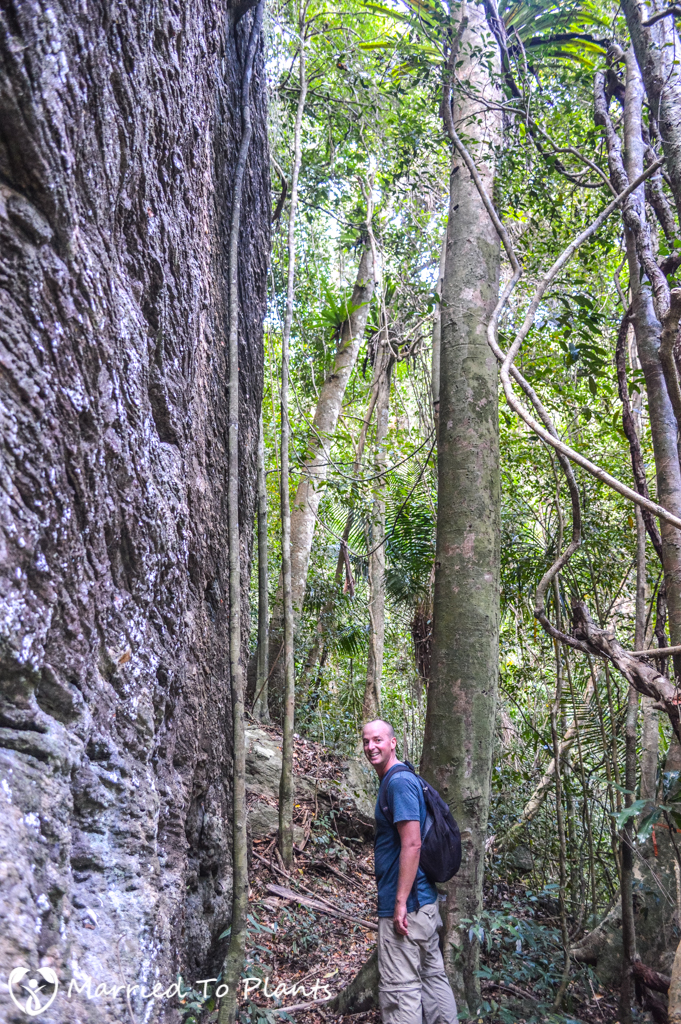
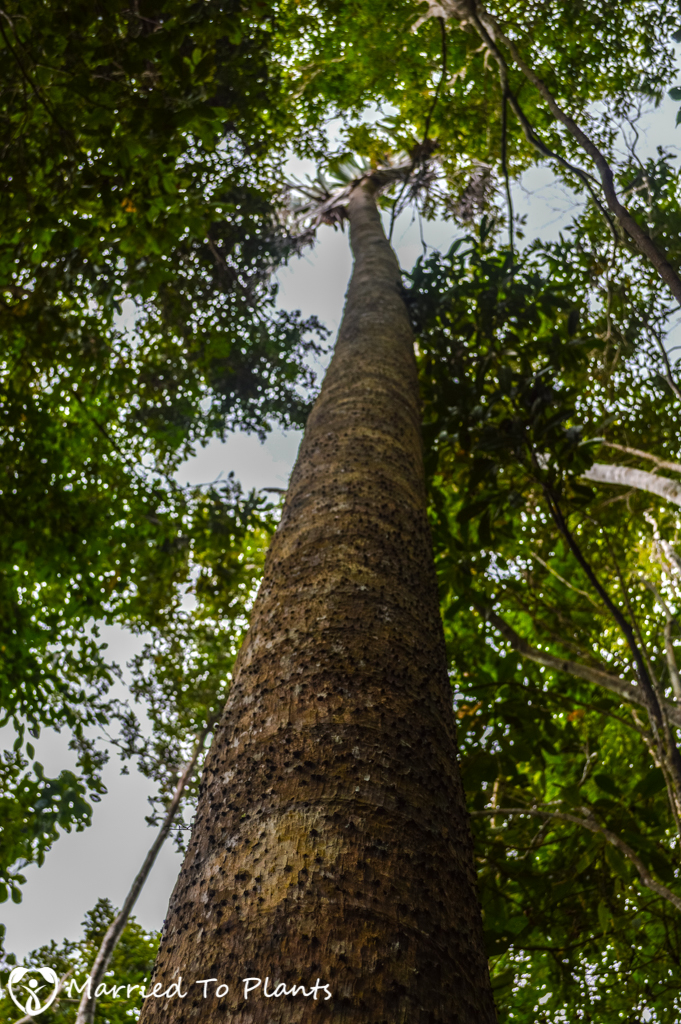
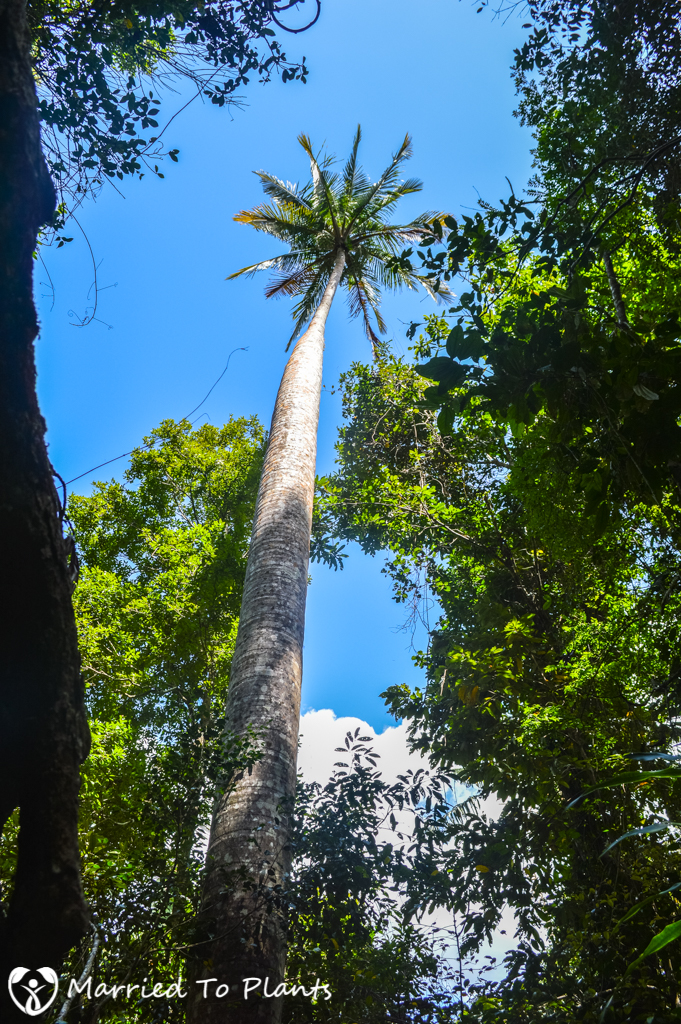
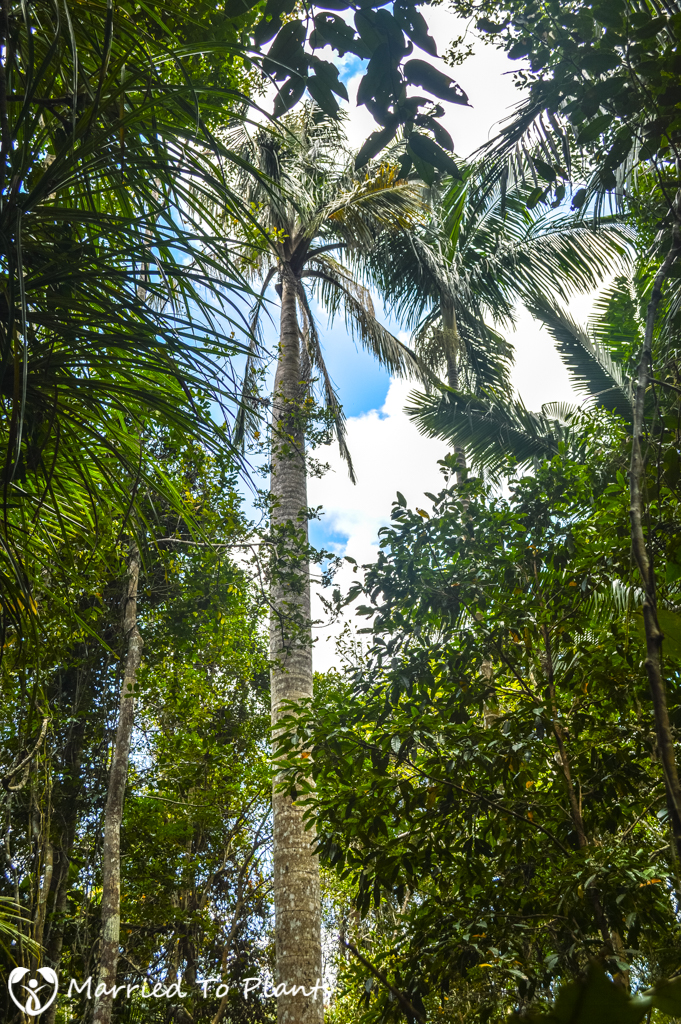
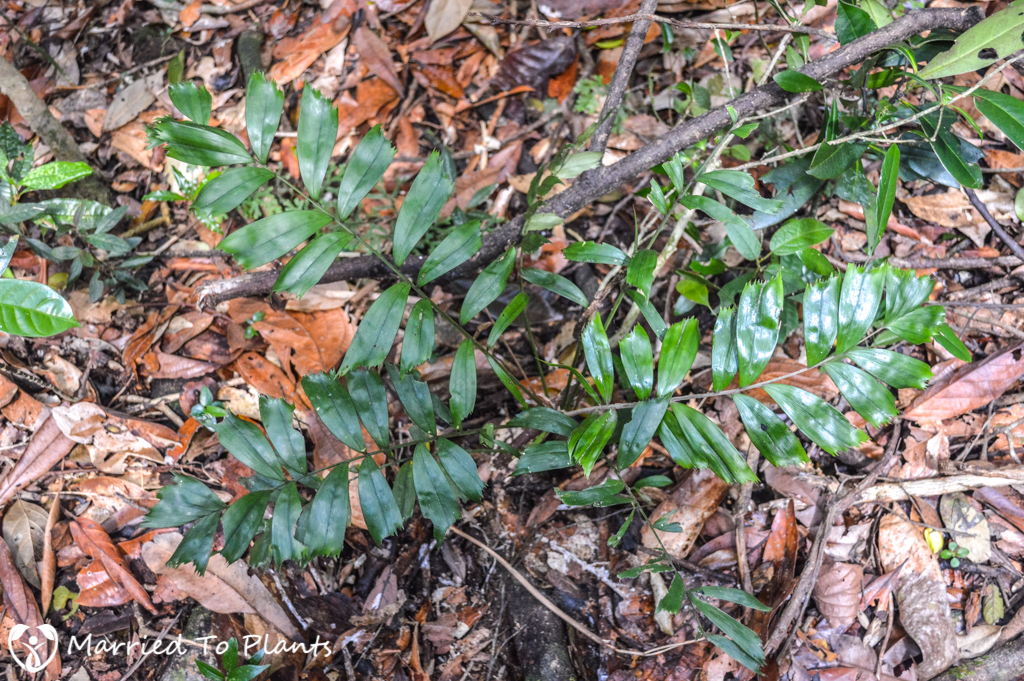
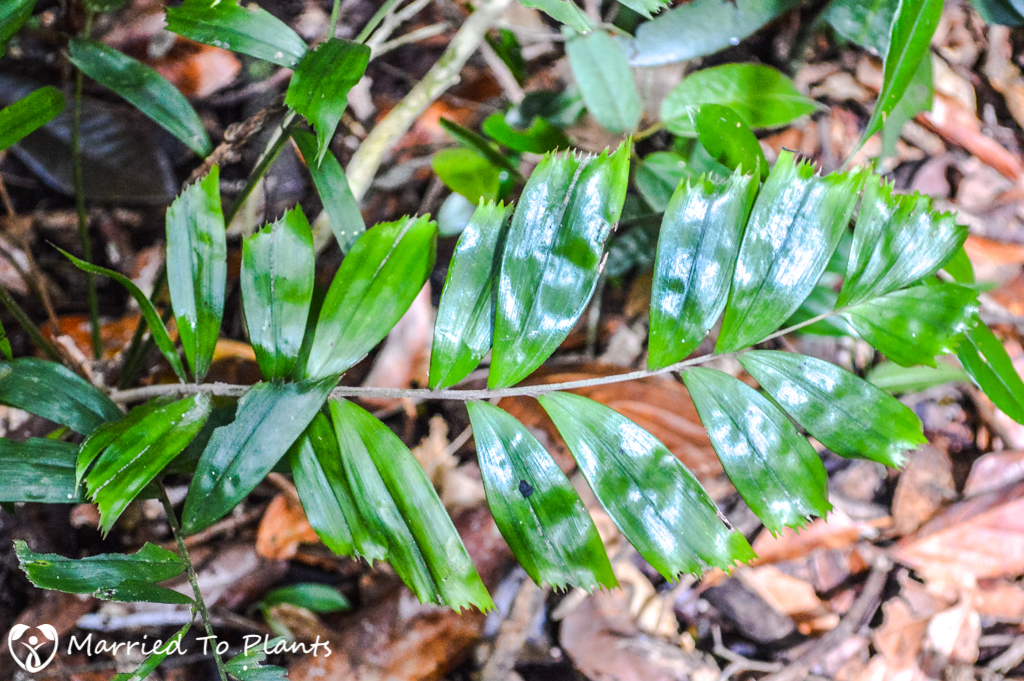
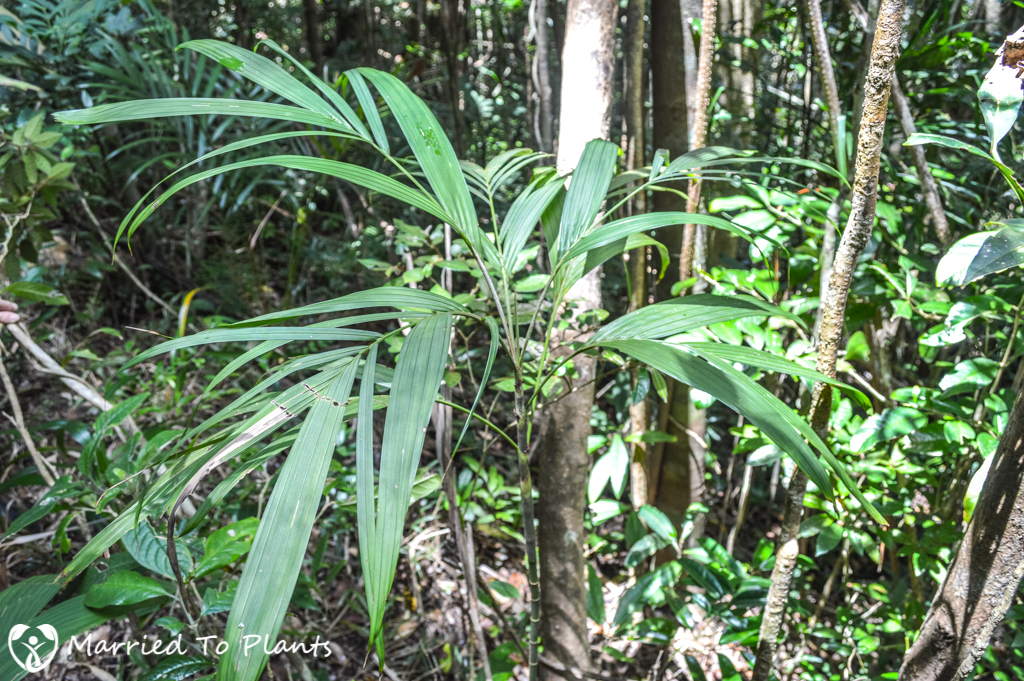


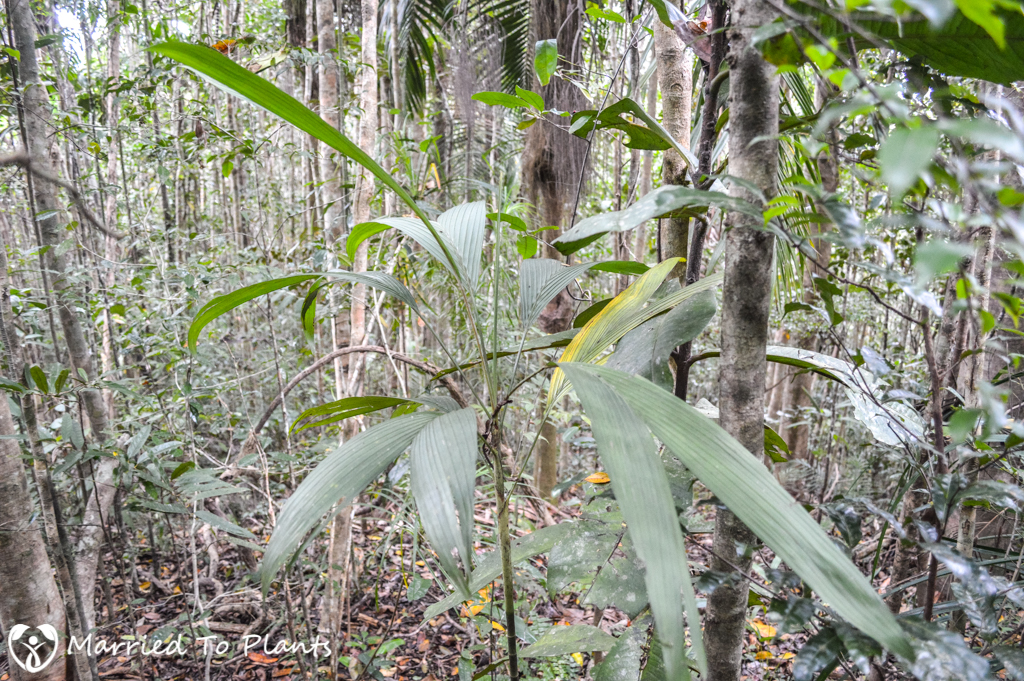
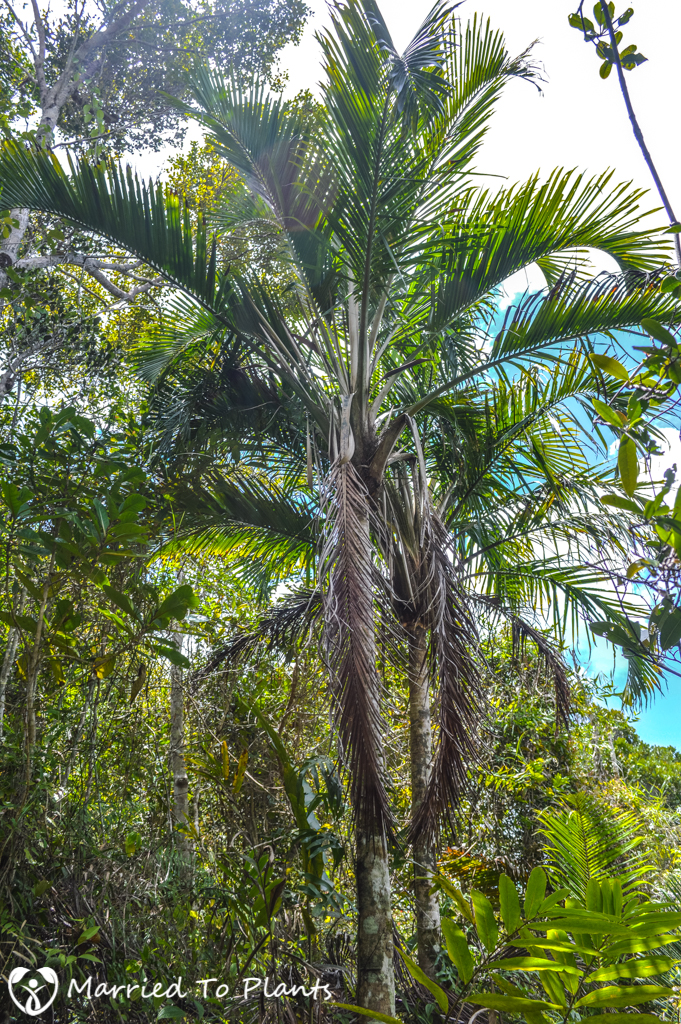

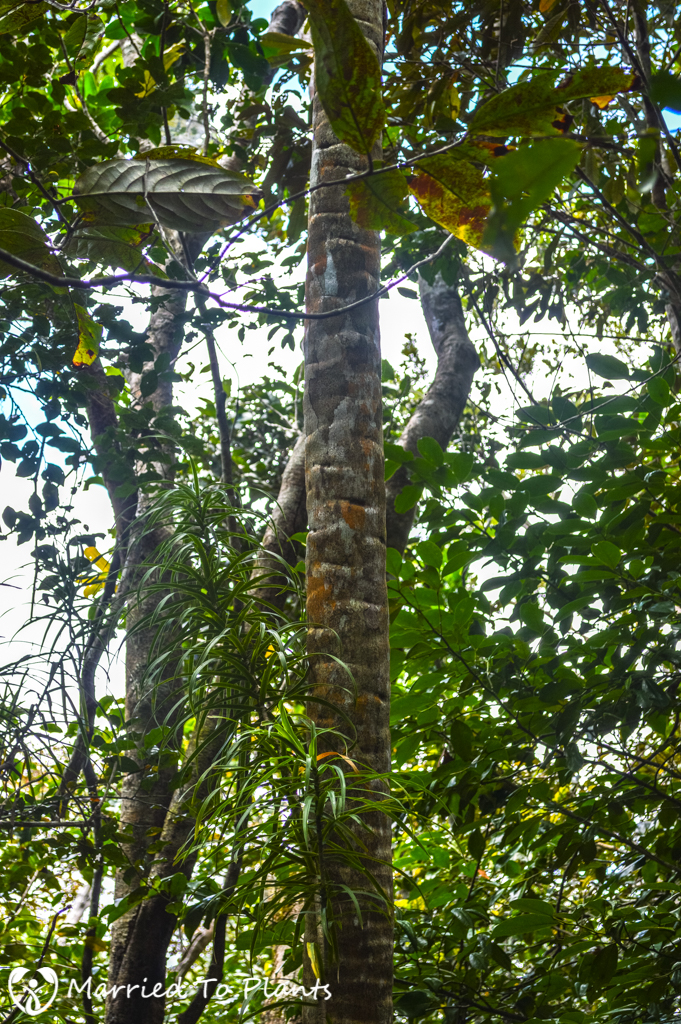
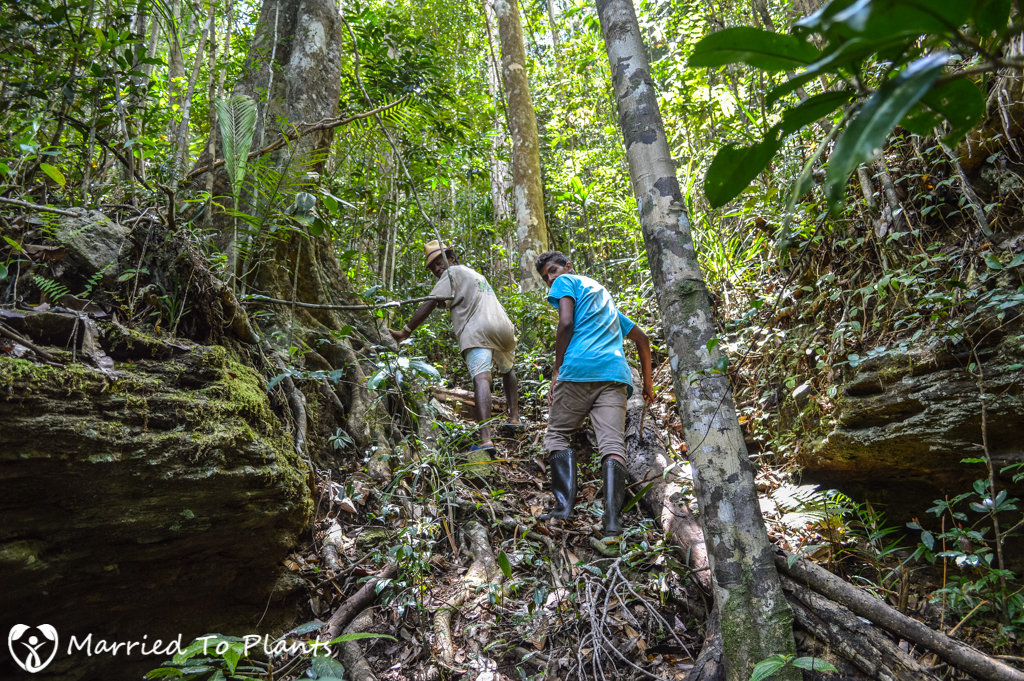
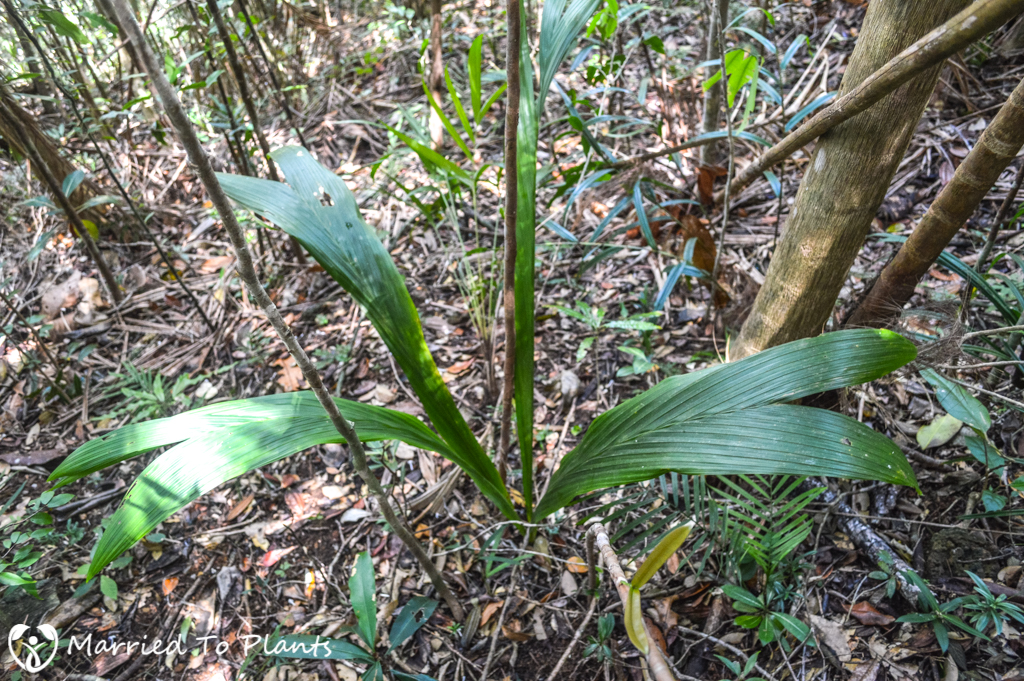
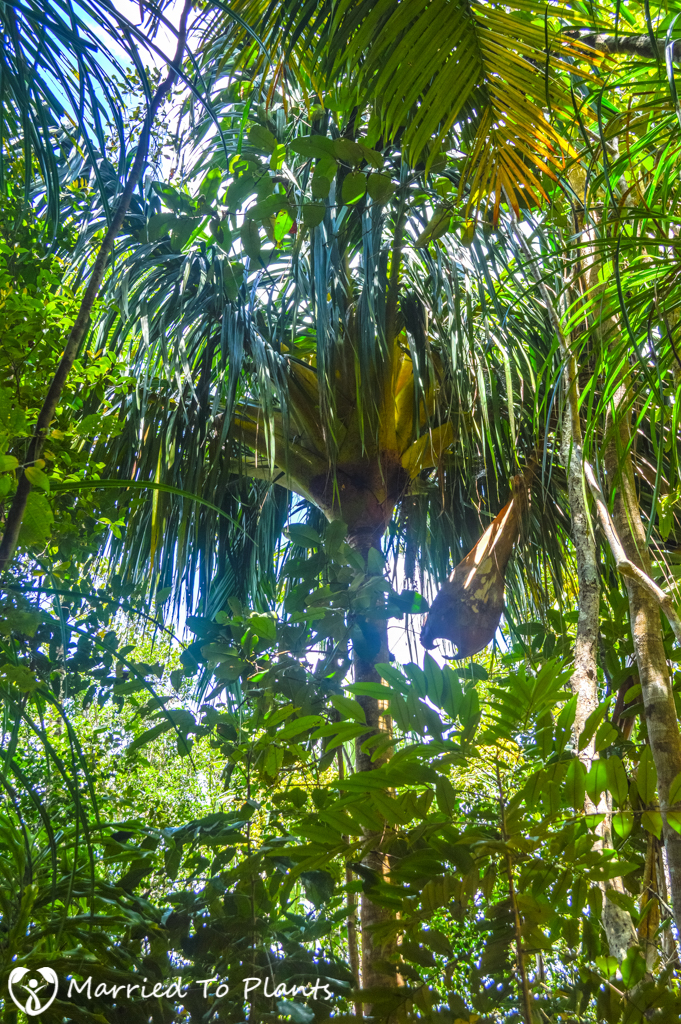
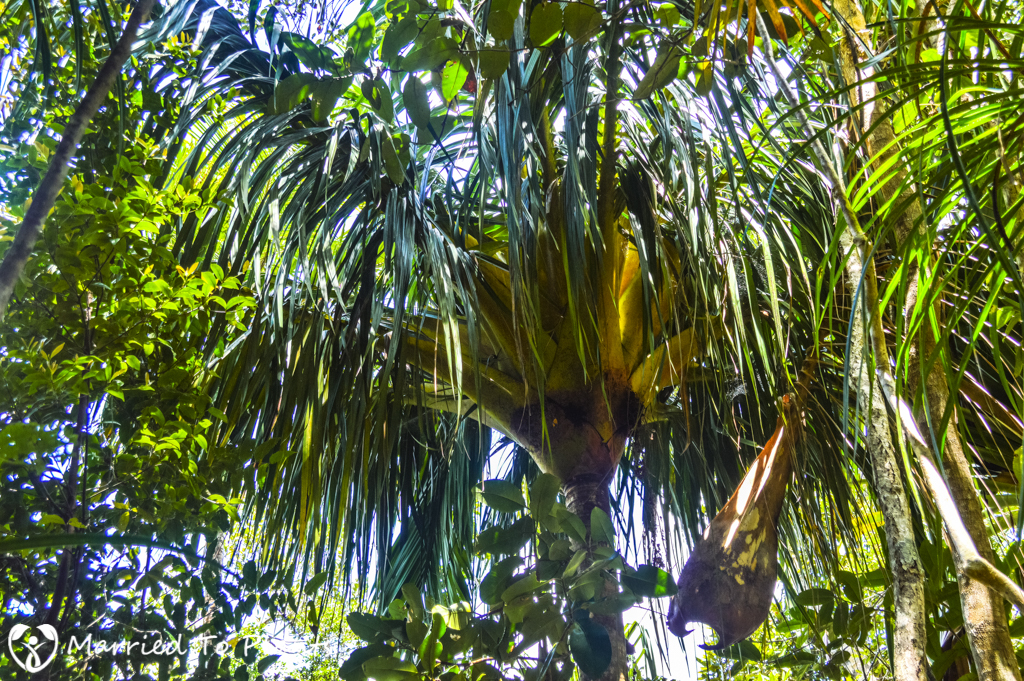
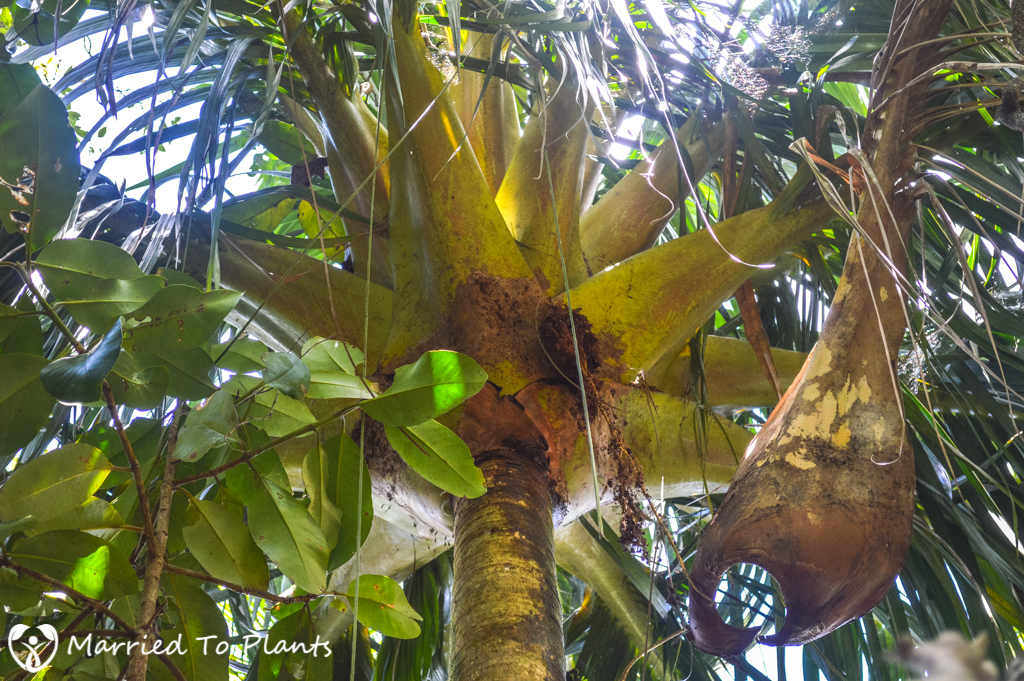
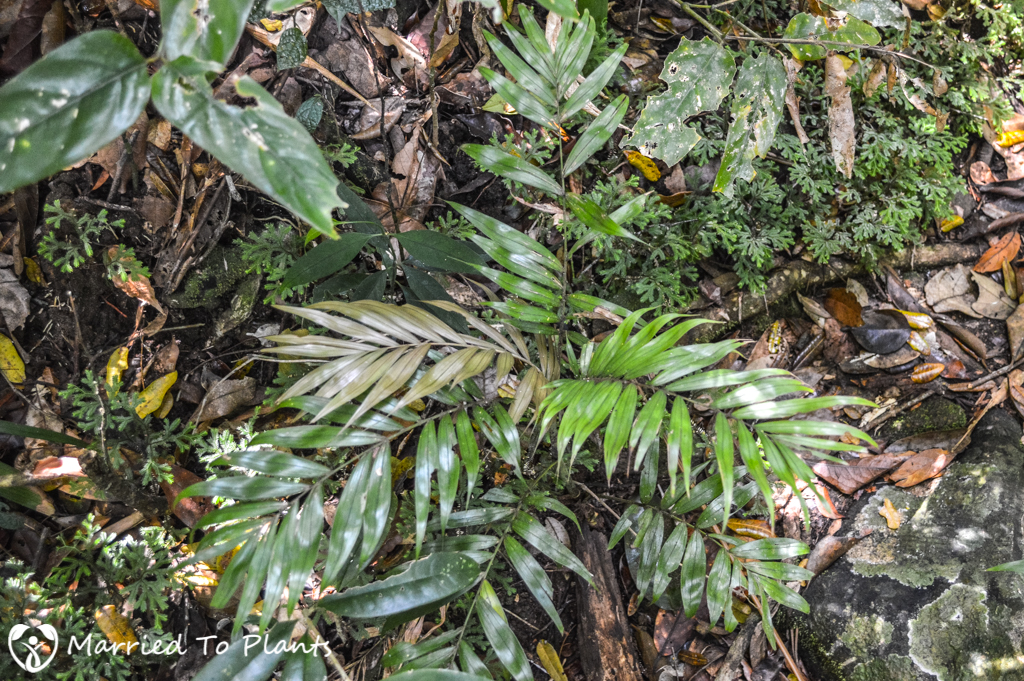
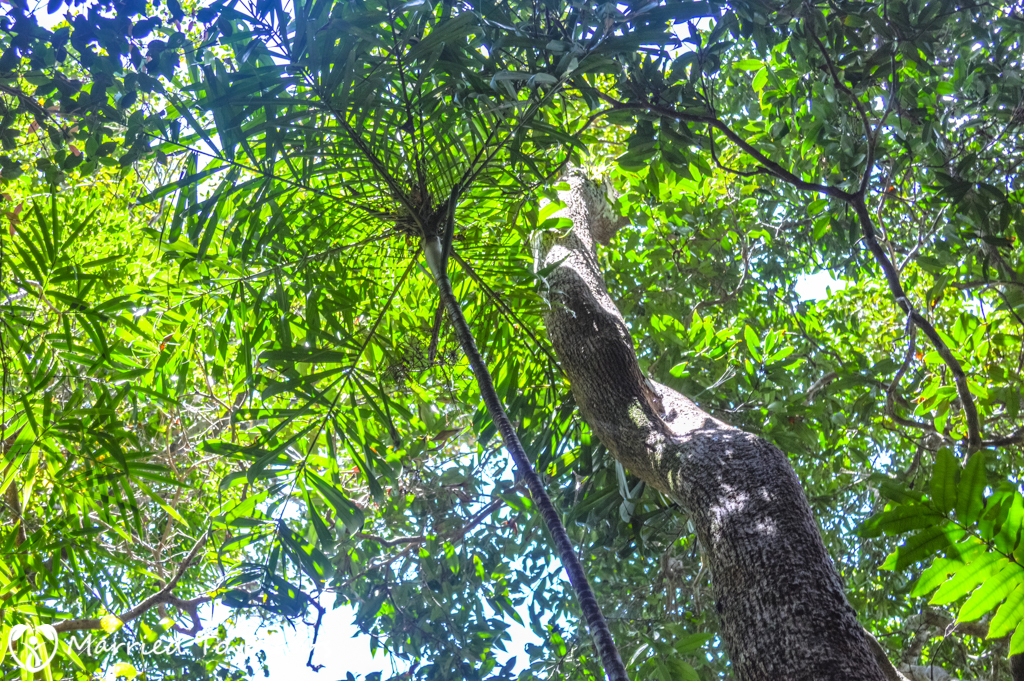

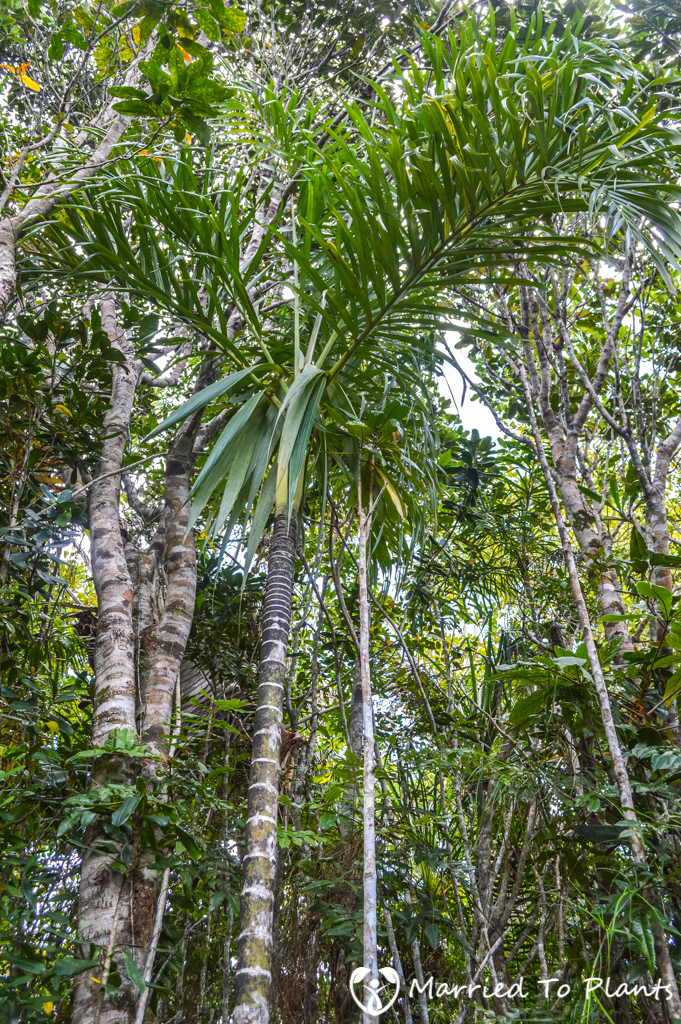
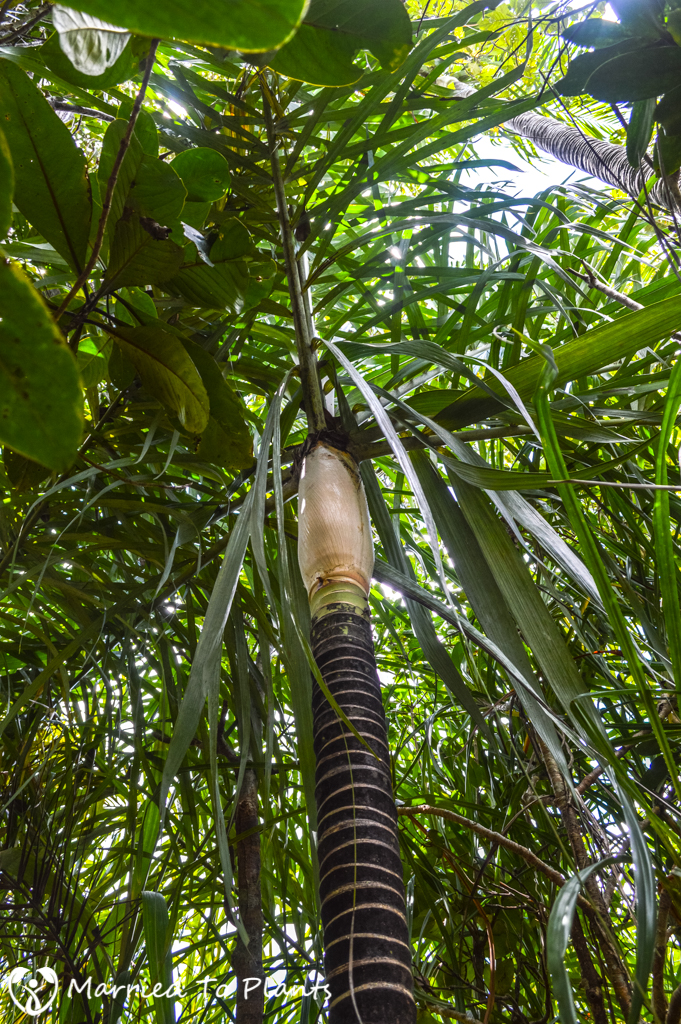

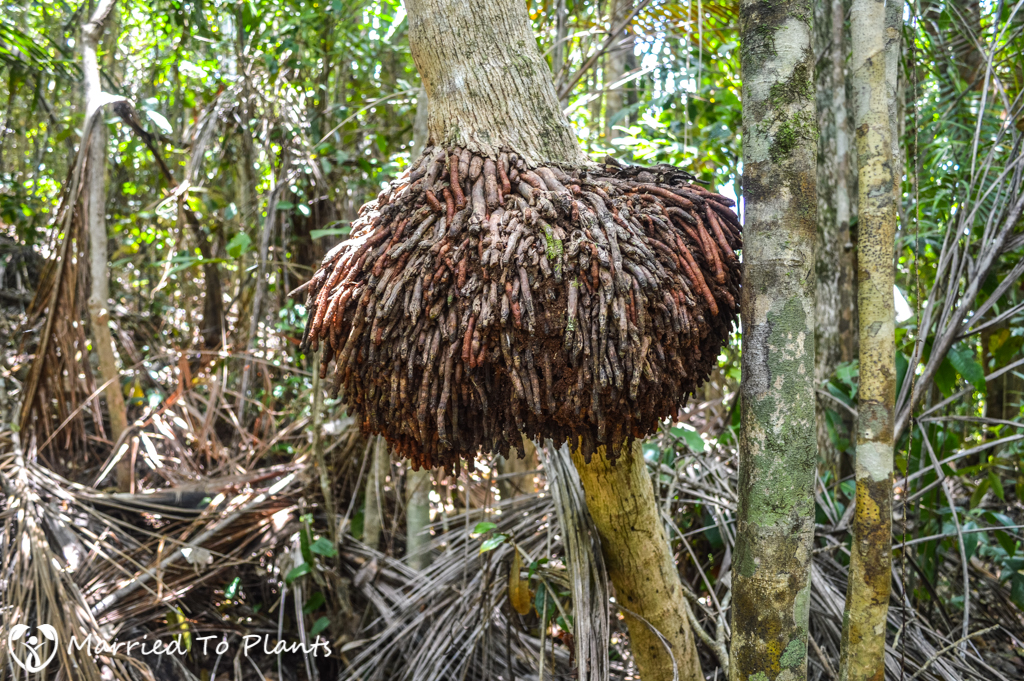
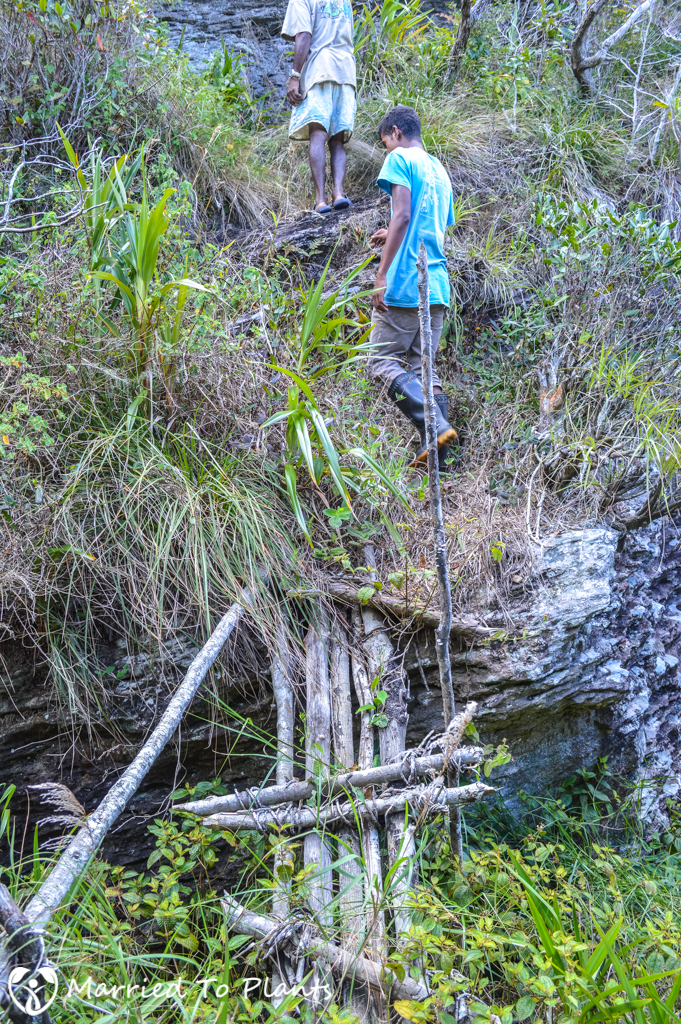
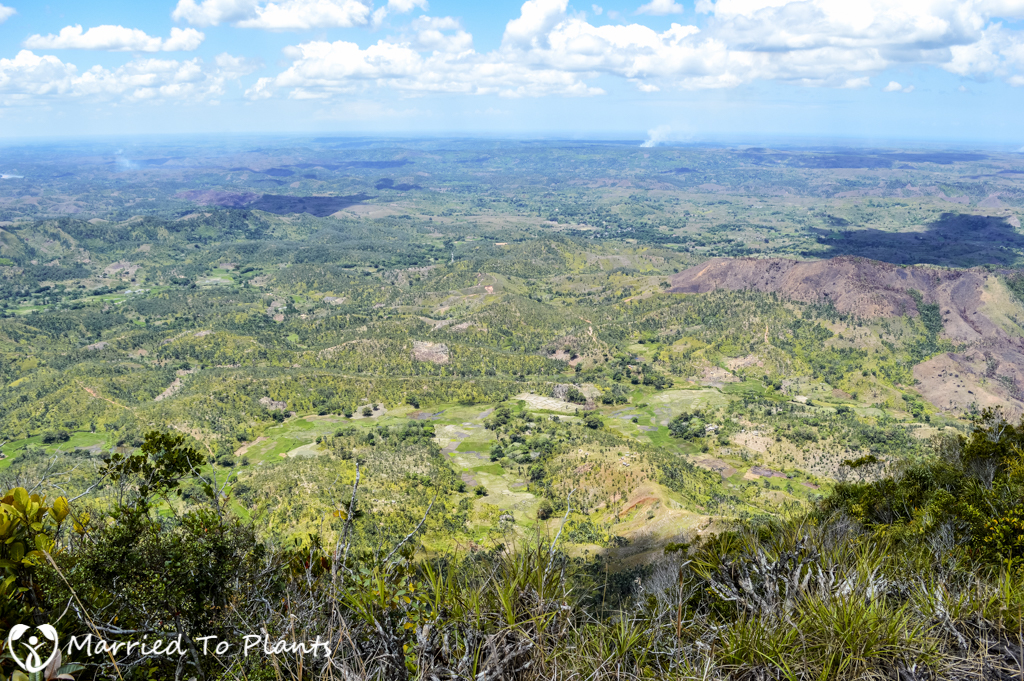
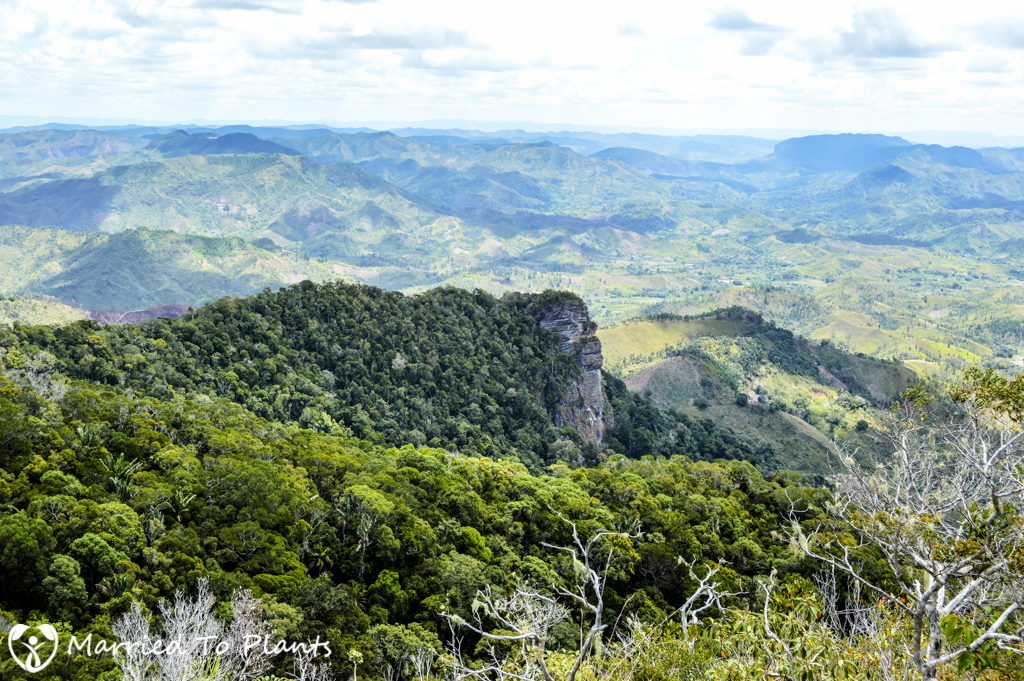

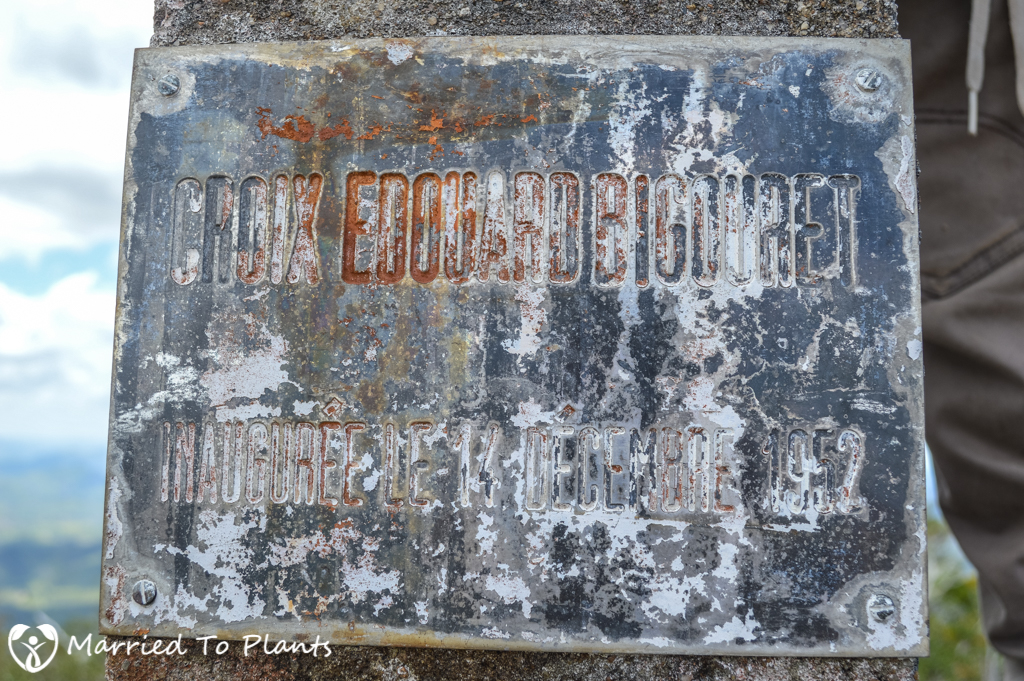
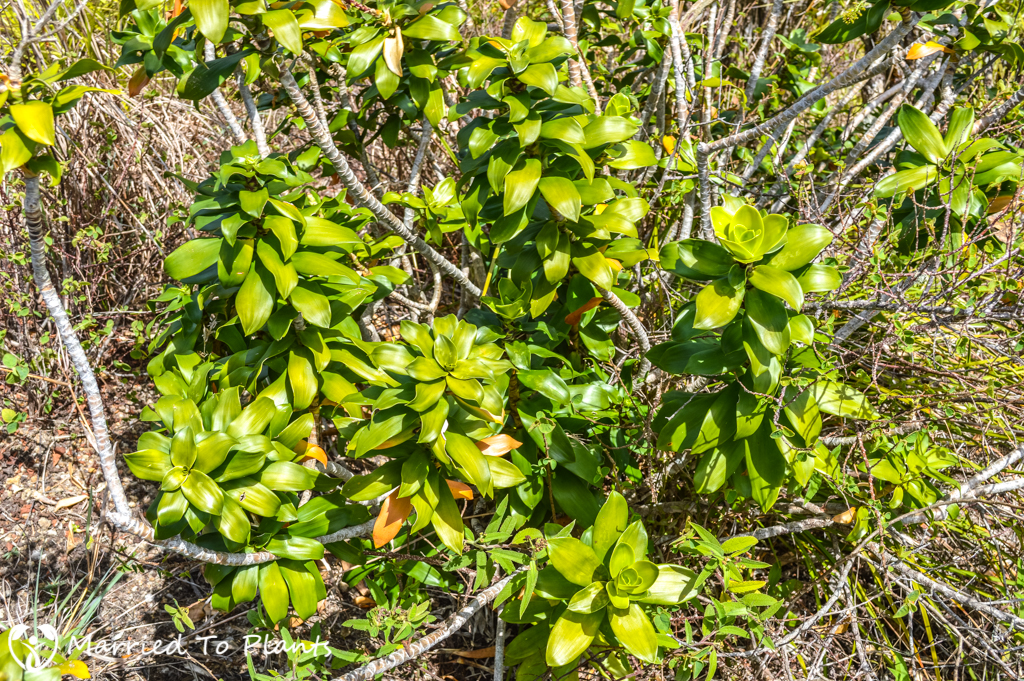
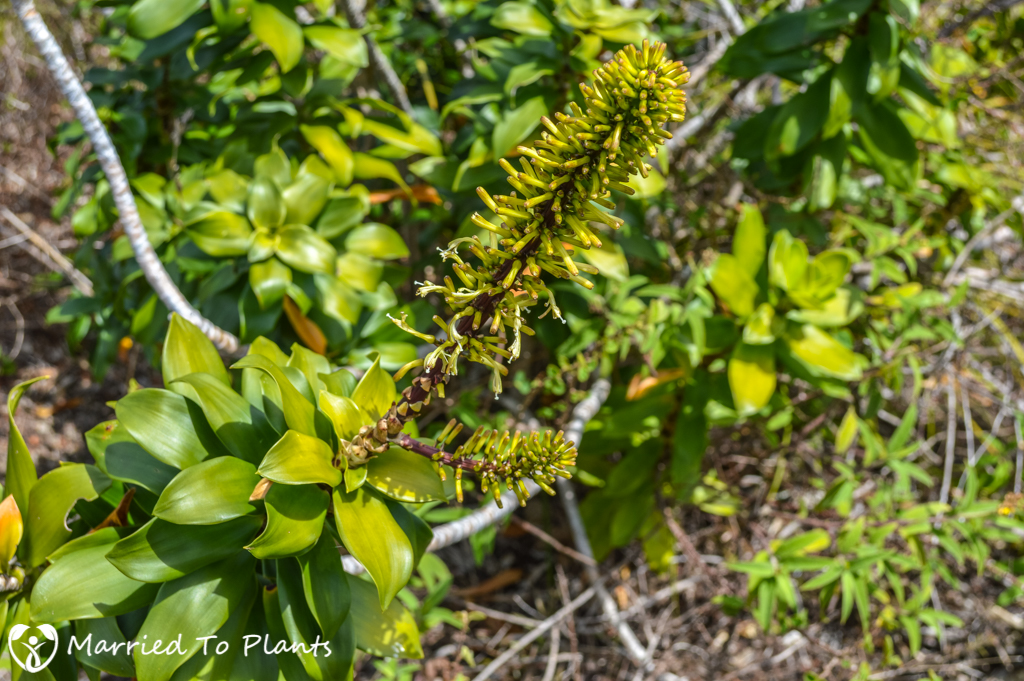
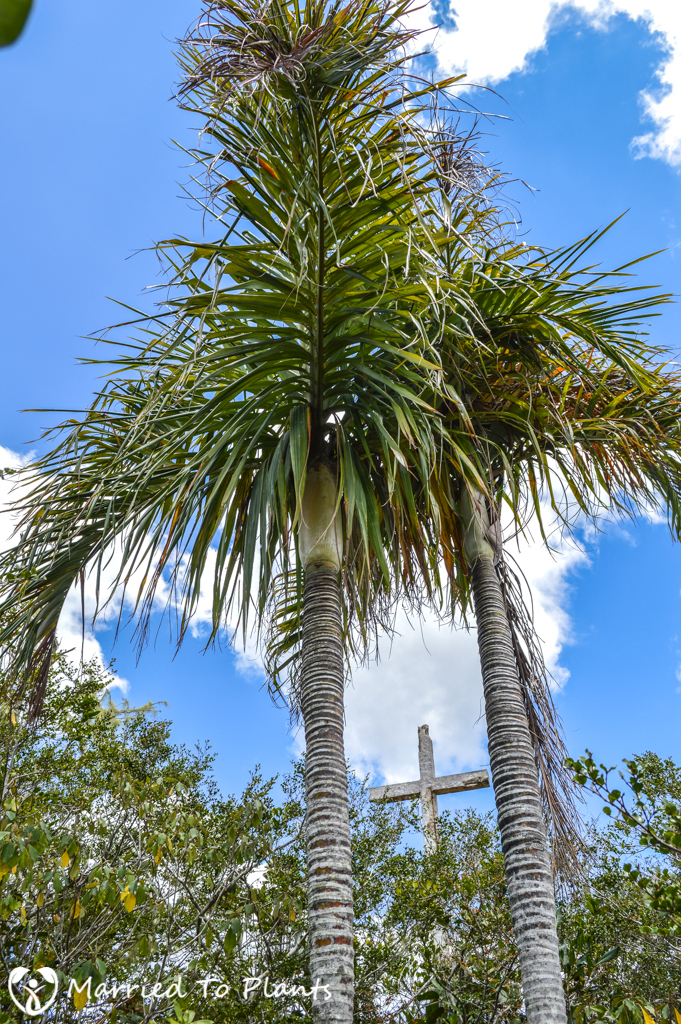
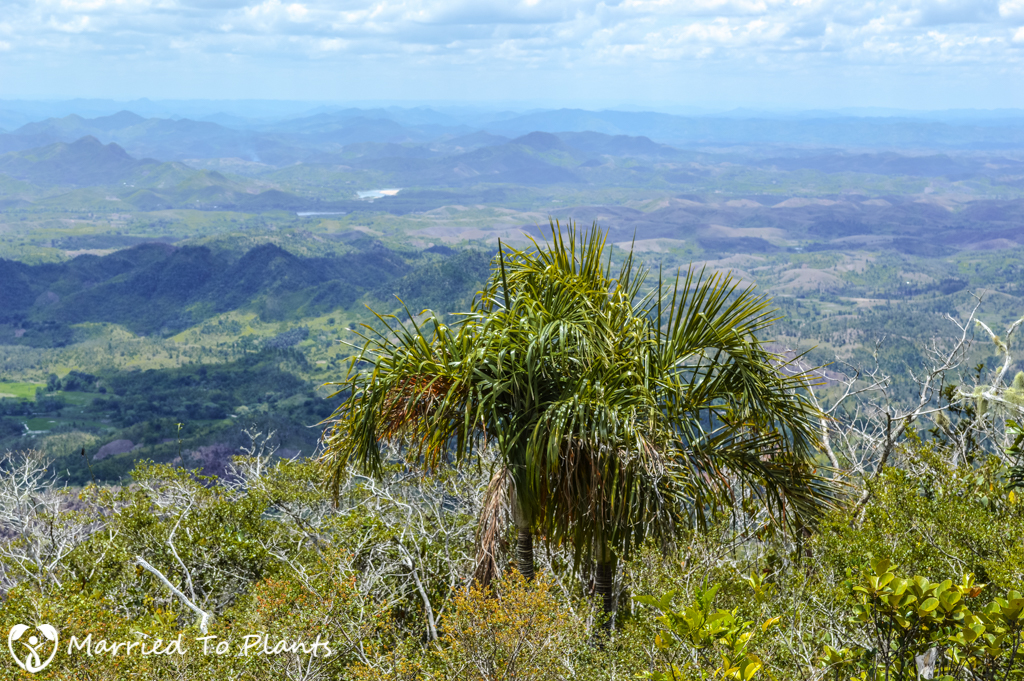
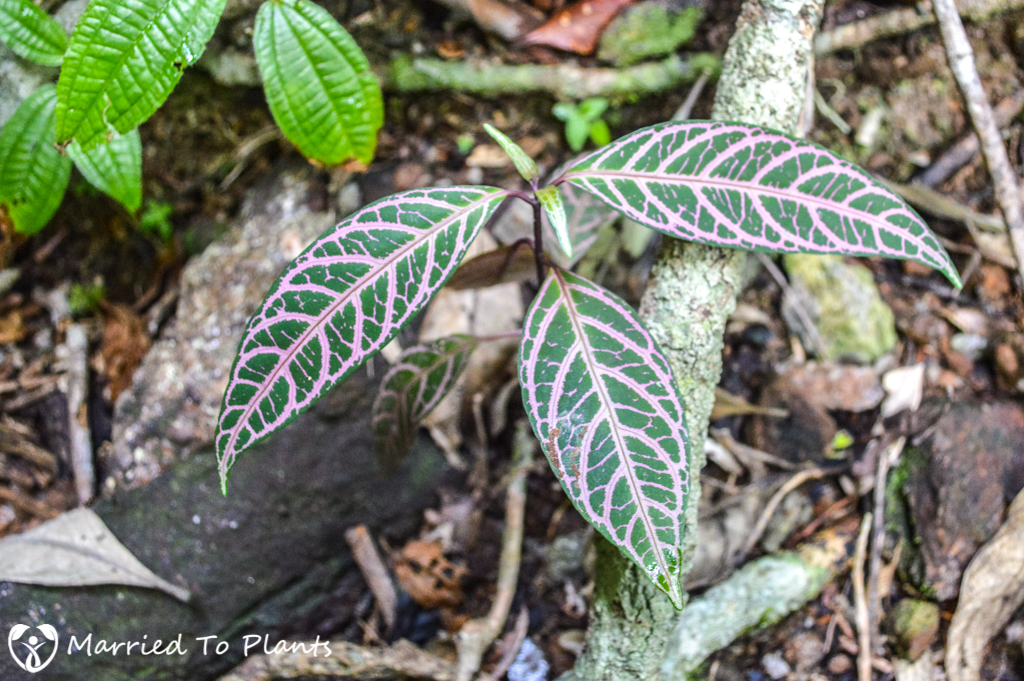
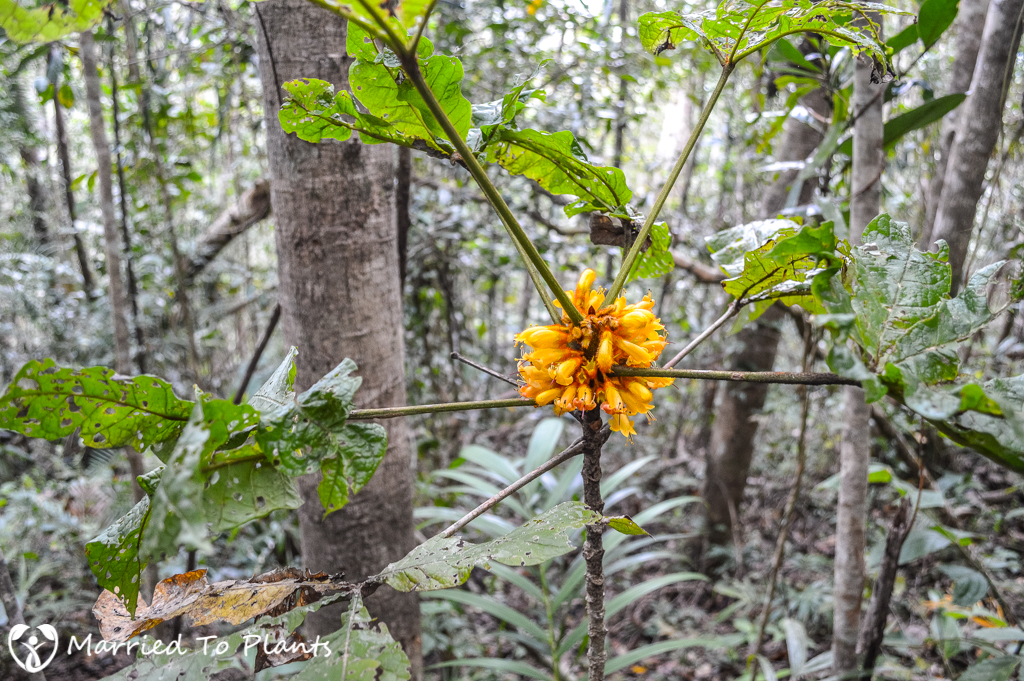

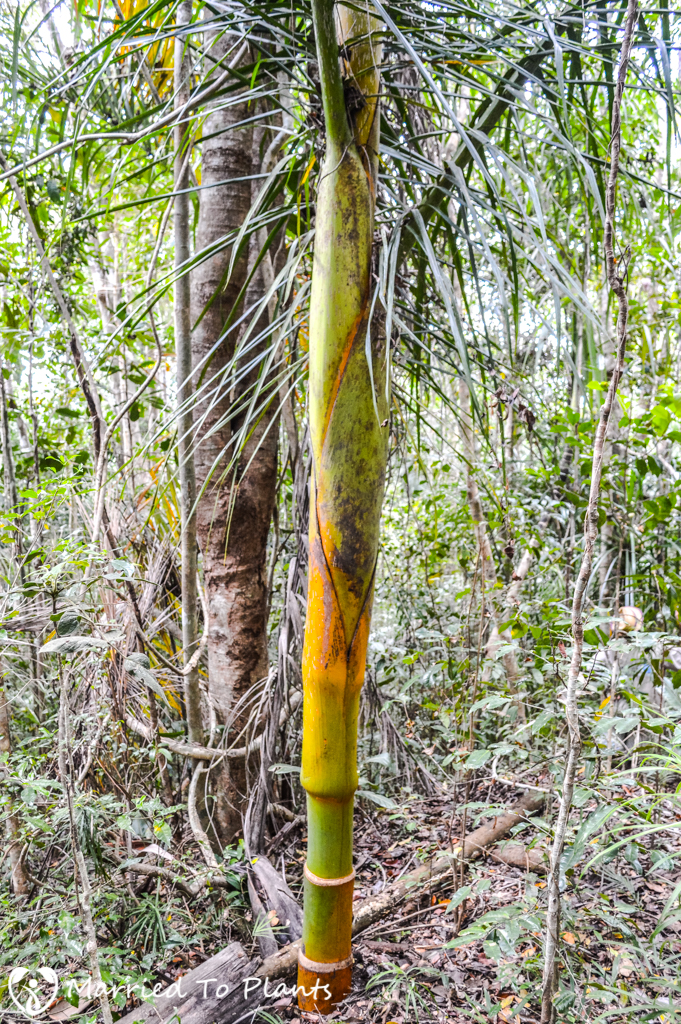
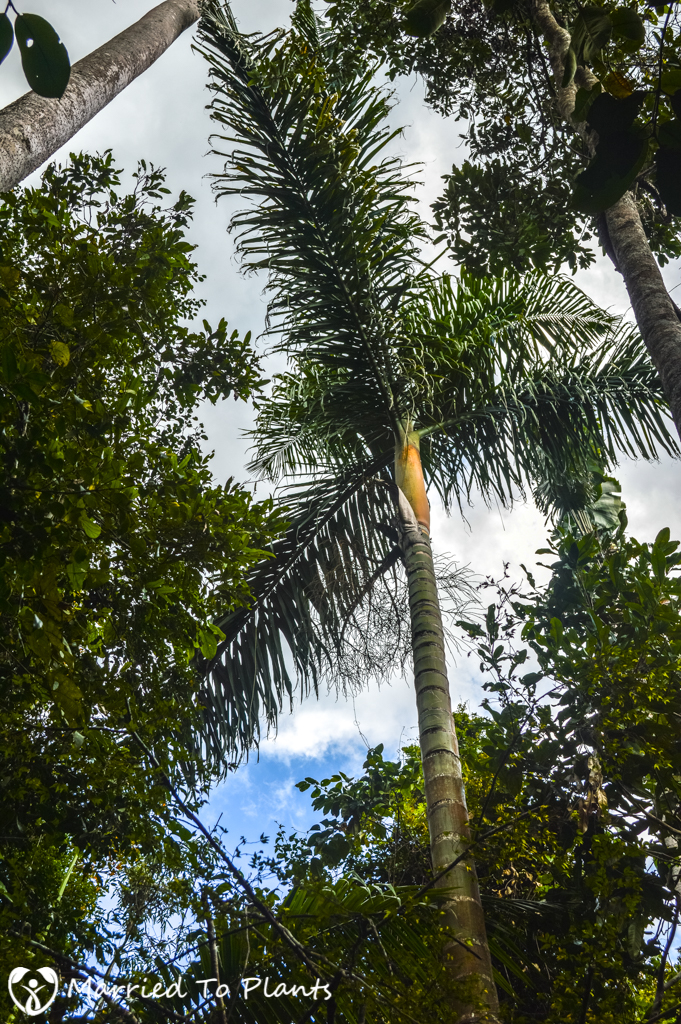
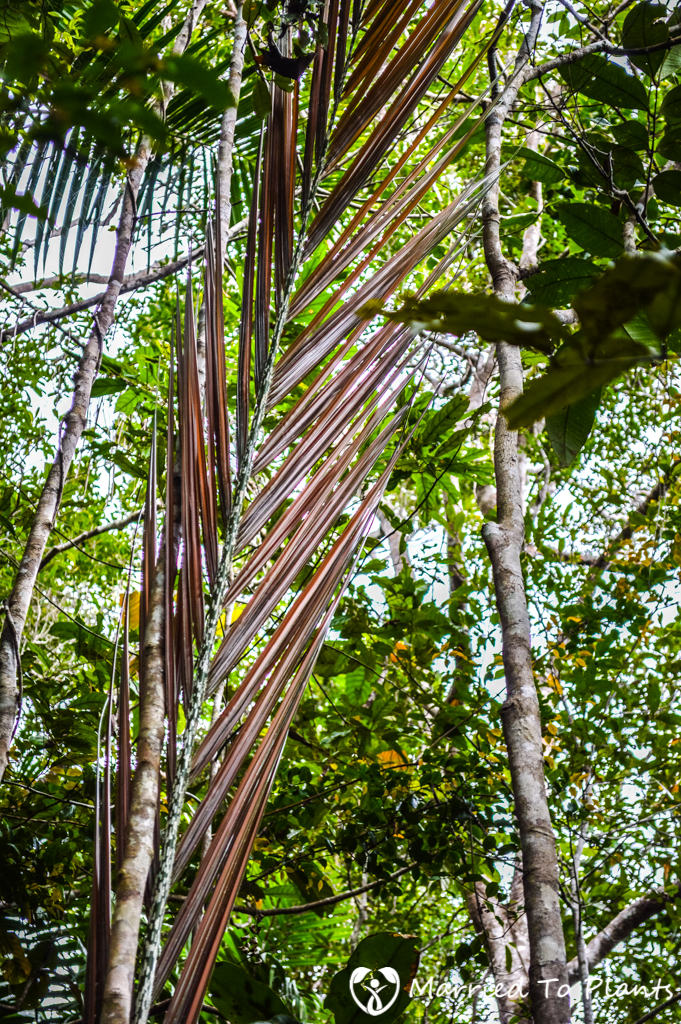
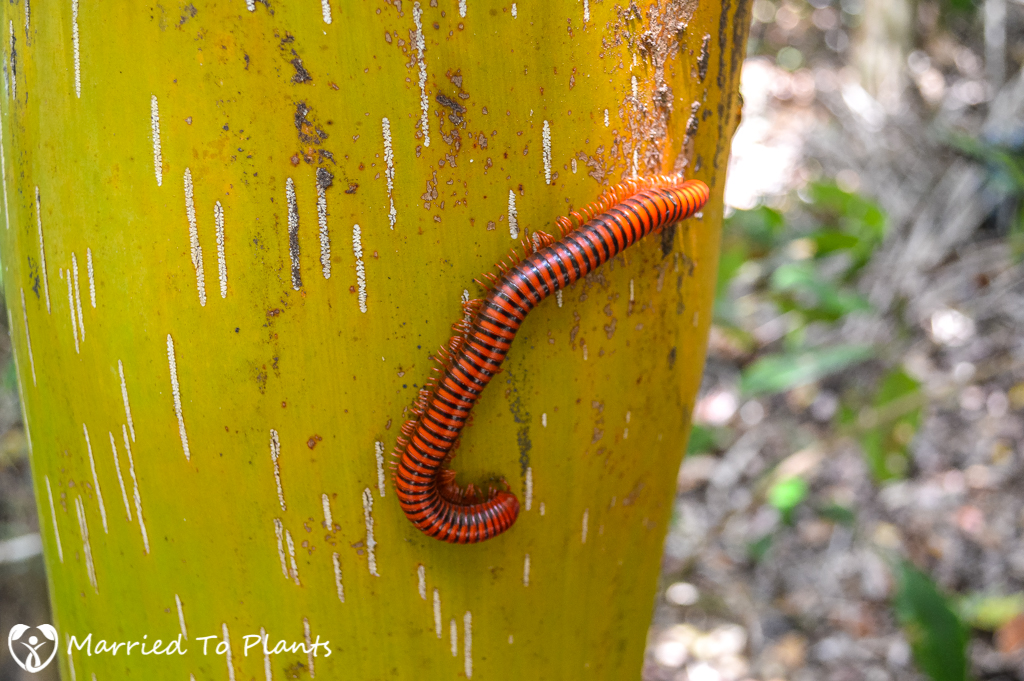
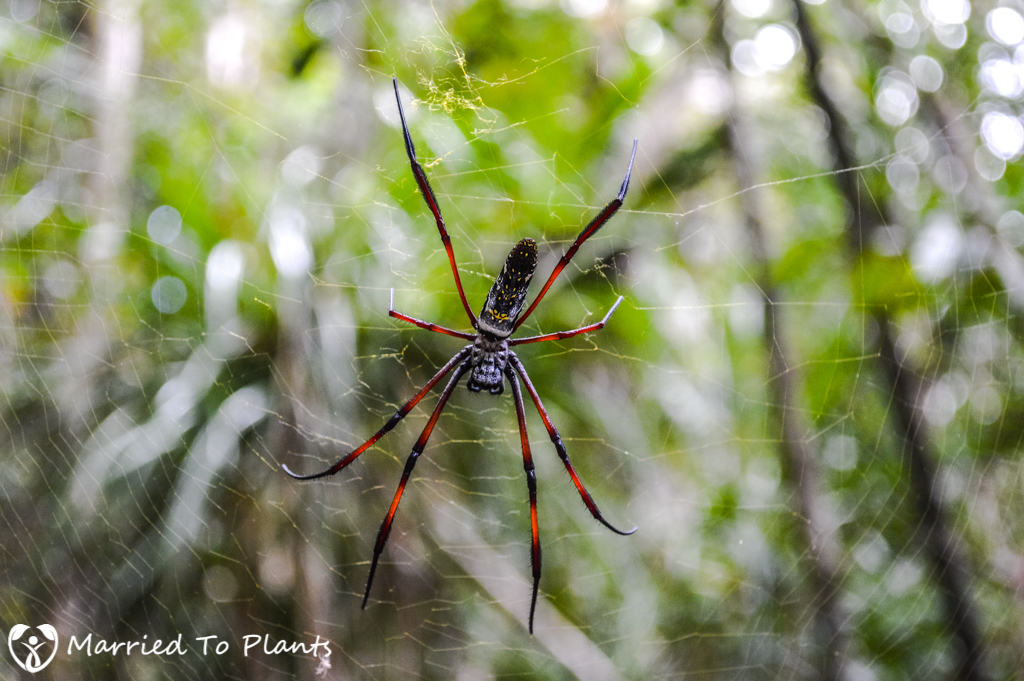

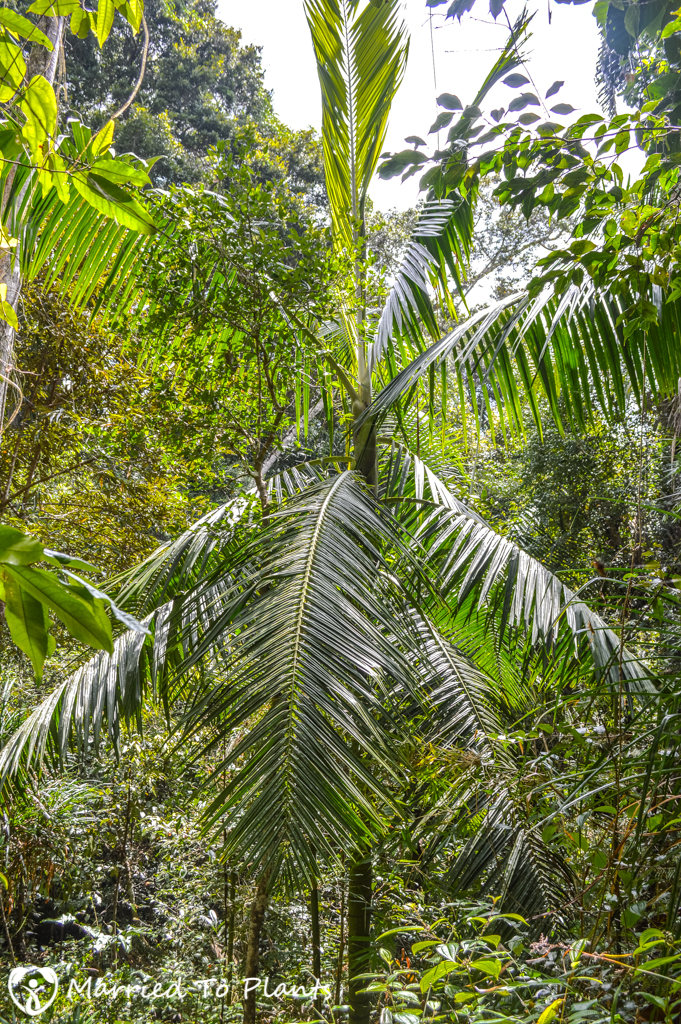
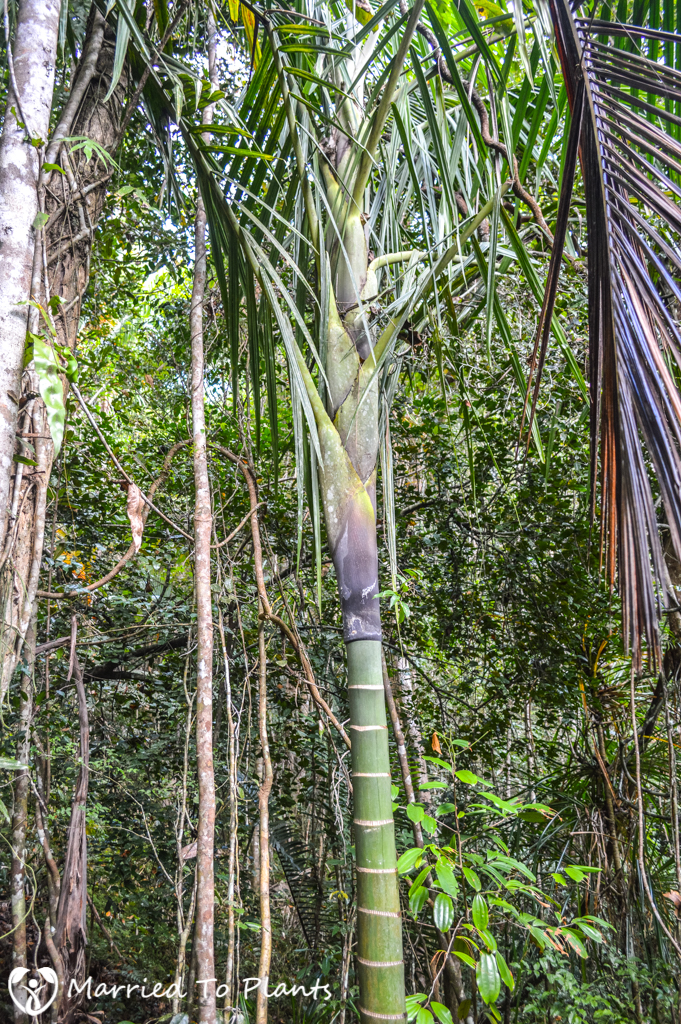
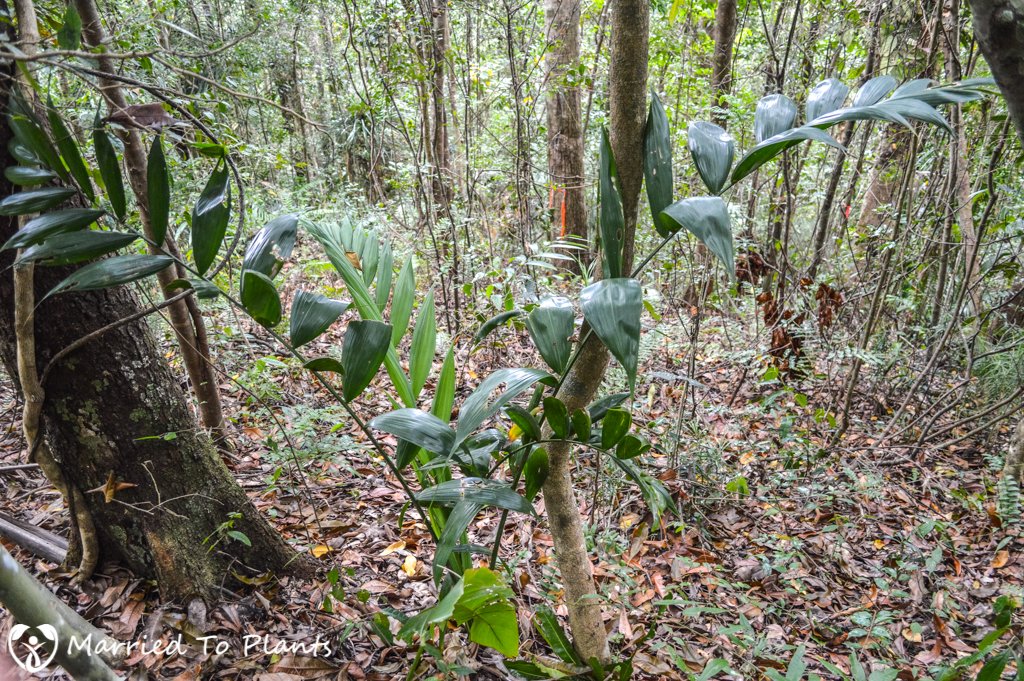
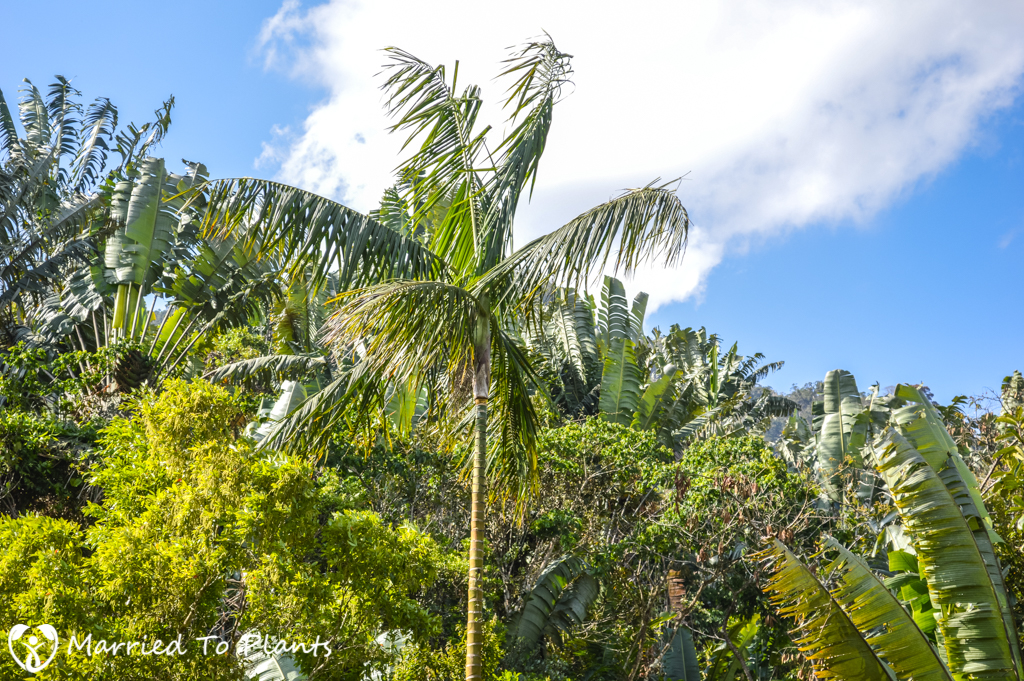
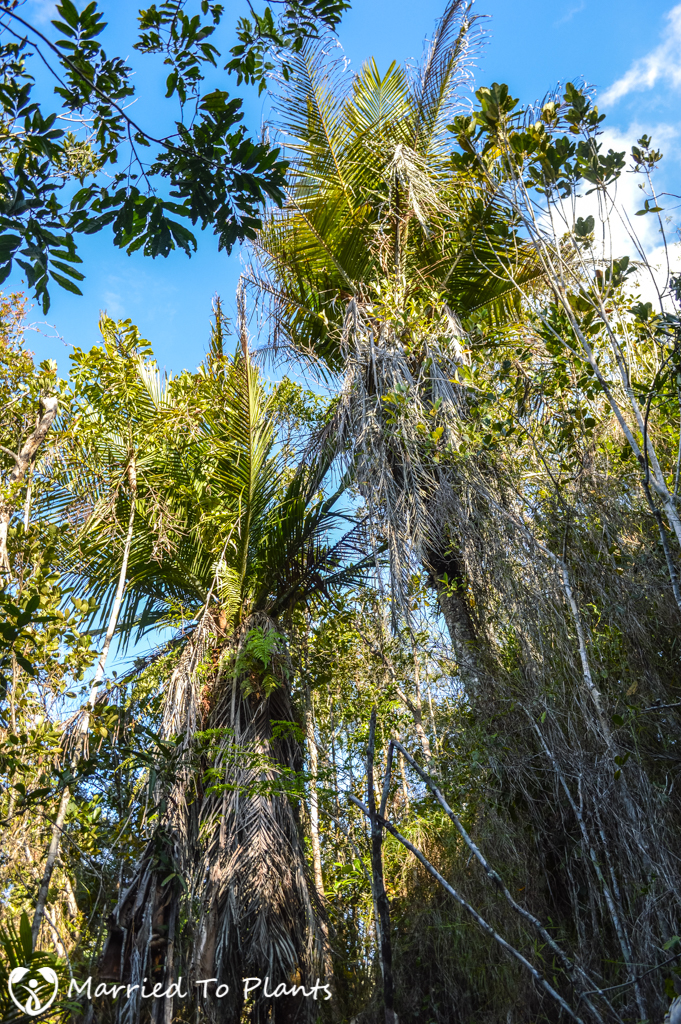
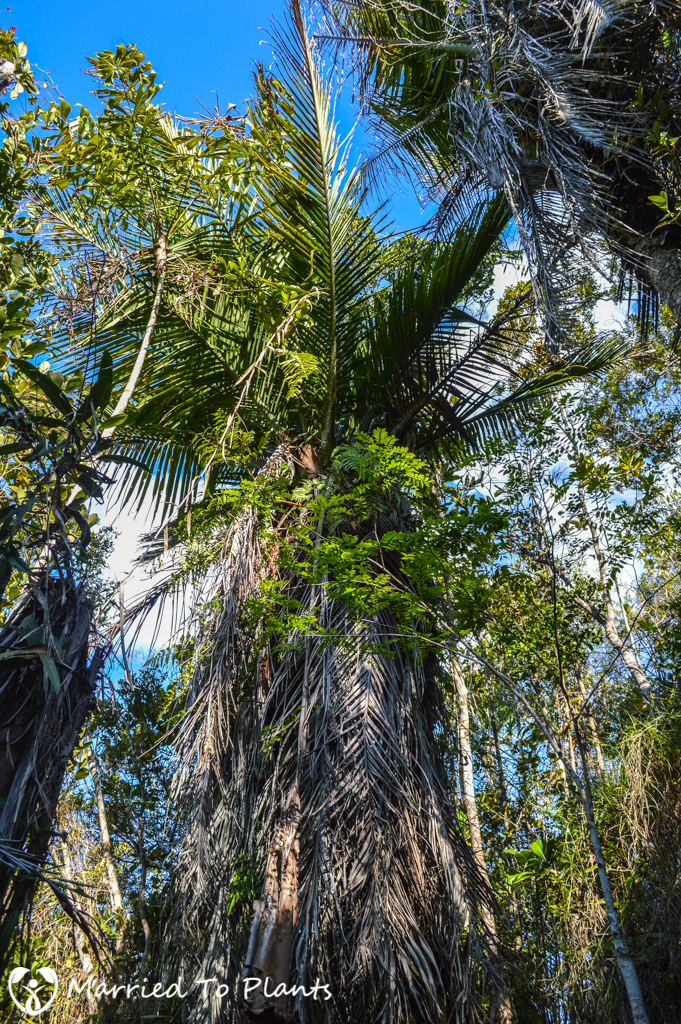
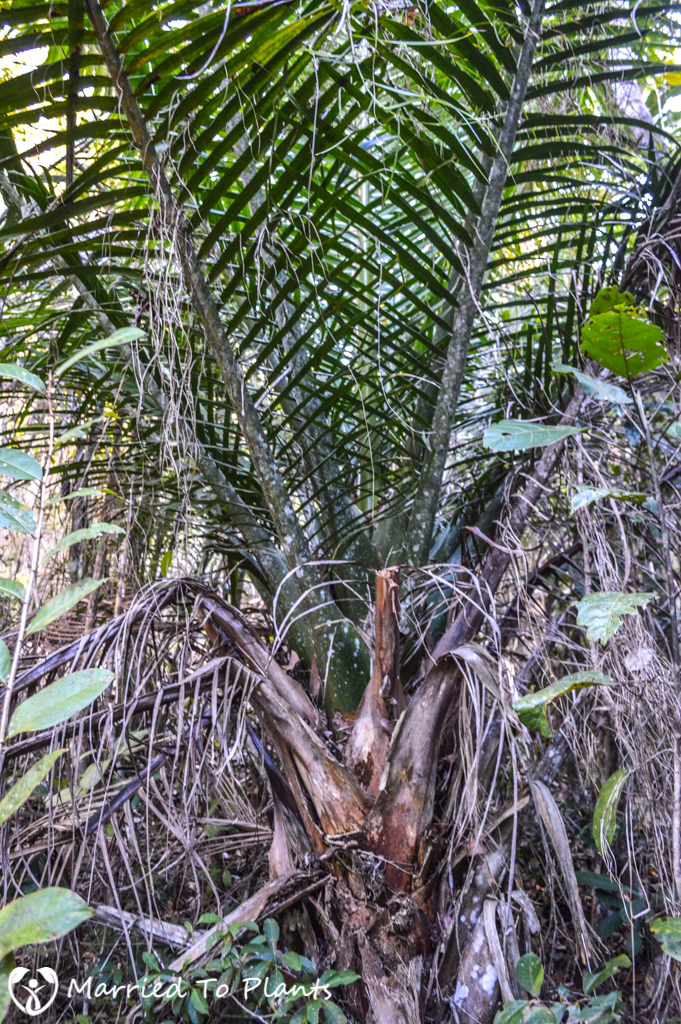
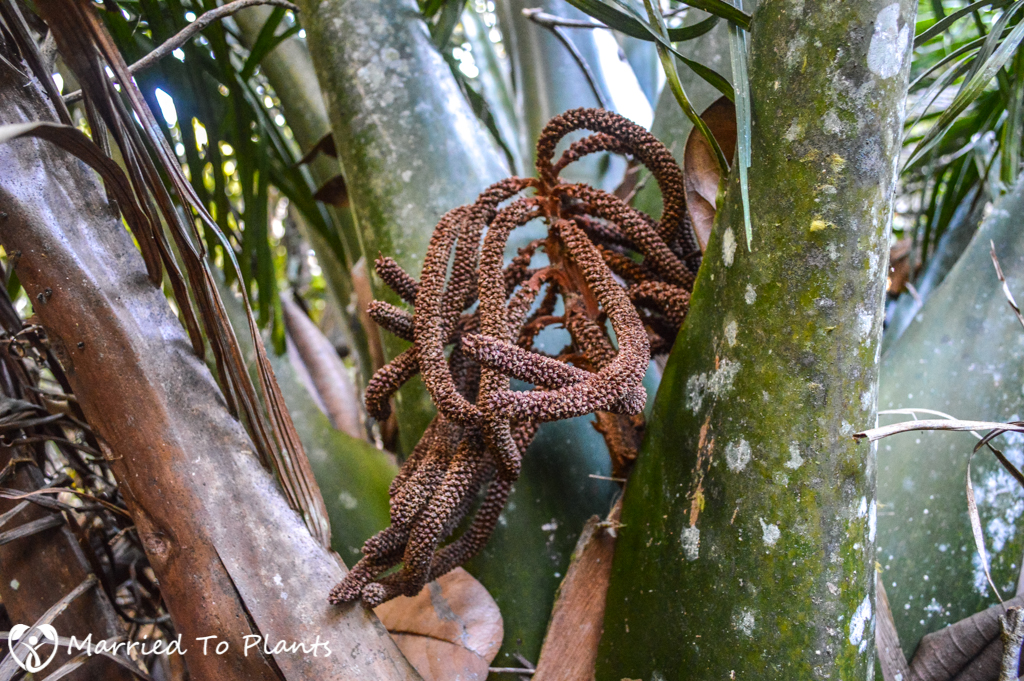

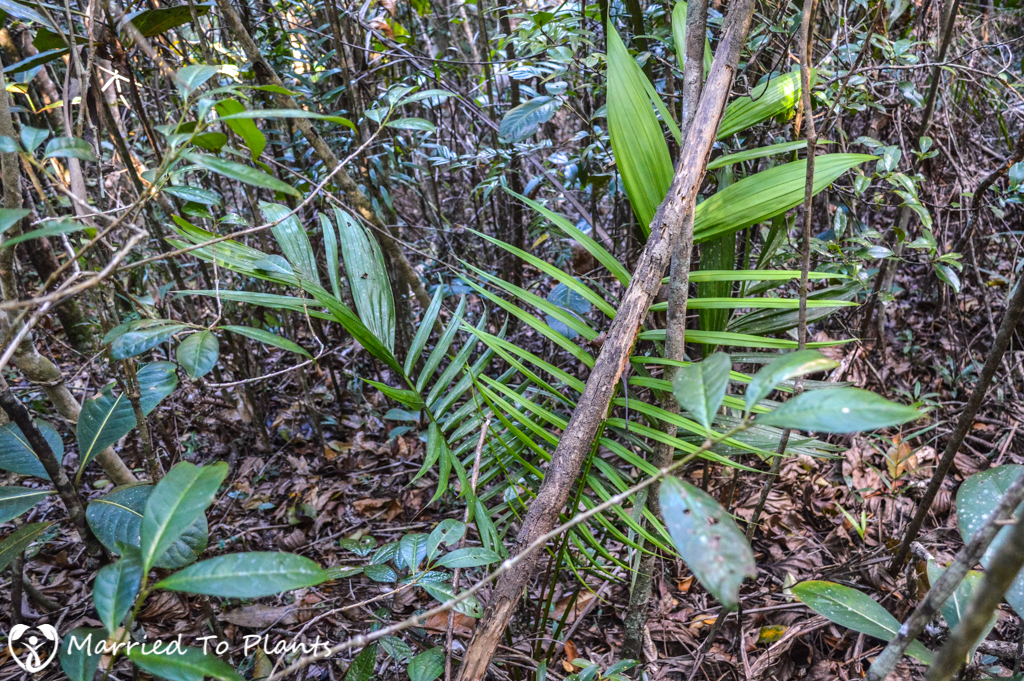

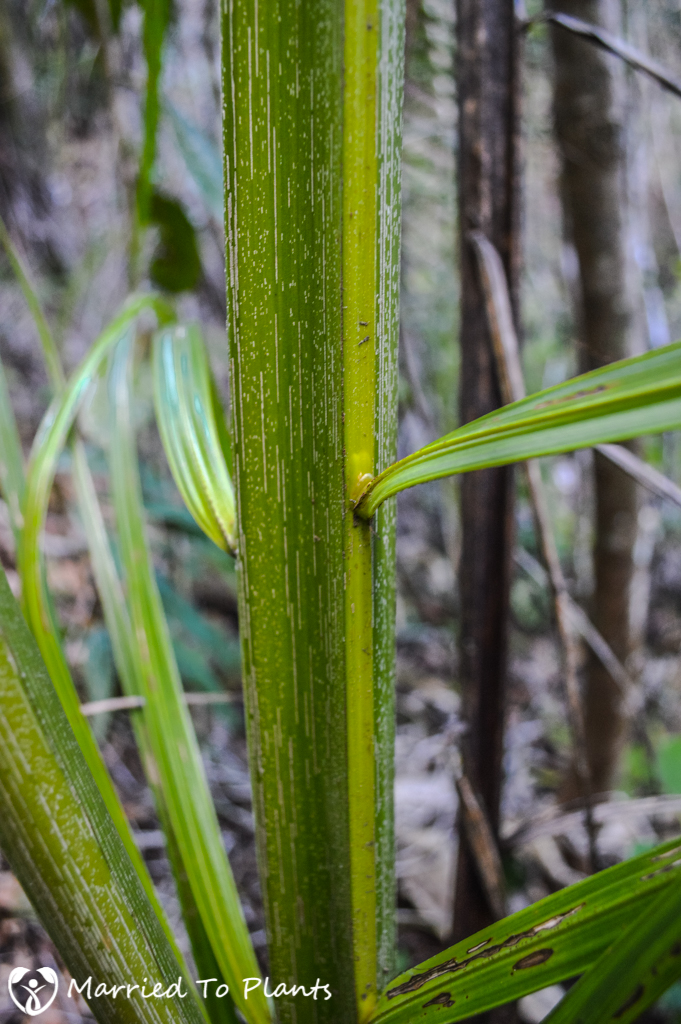
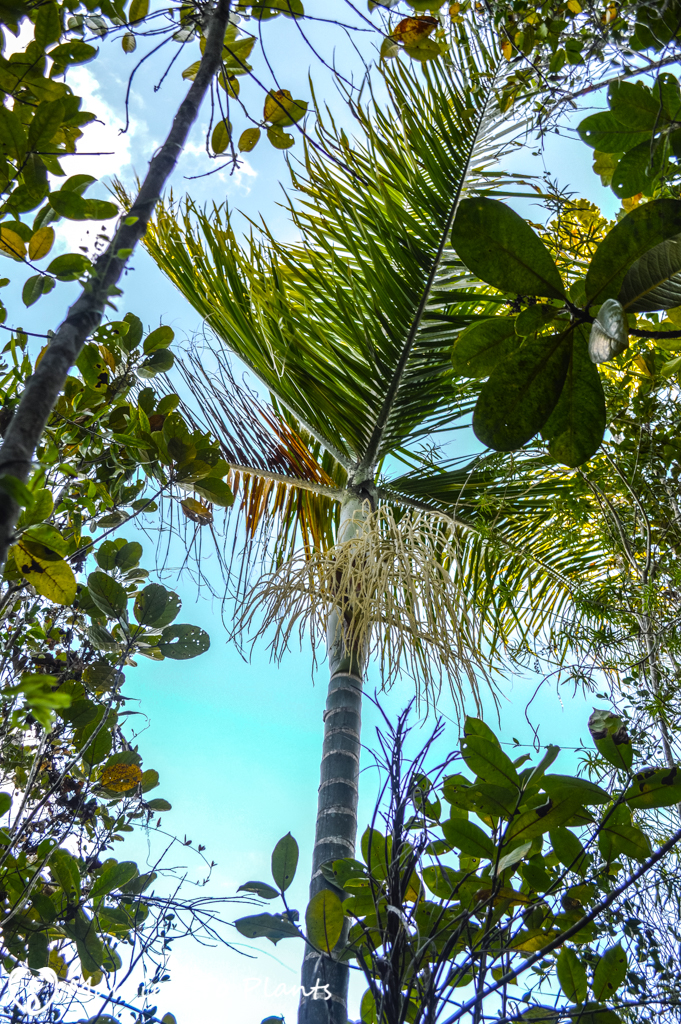

Hi Len,
Very interesting talk about palm trees in wet forests. I didn’t know this place, which is particularly rich in palm trees. I’ll have to explore Mount Vatovavy one day too. Can you give me a contact?
For the picture «mount-vatovavy-unknown-flower», it’s a vitex sp.
Hi Christophe. Sadly, I lost the contact as this was almost 7 years ago.
This was very useful for me. I’m a 3D foliage artist. Thank you!